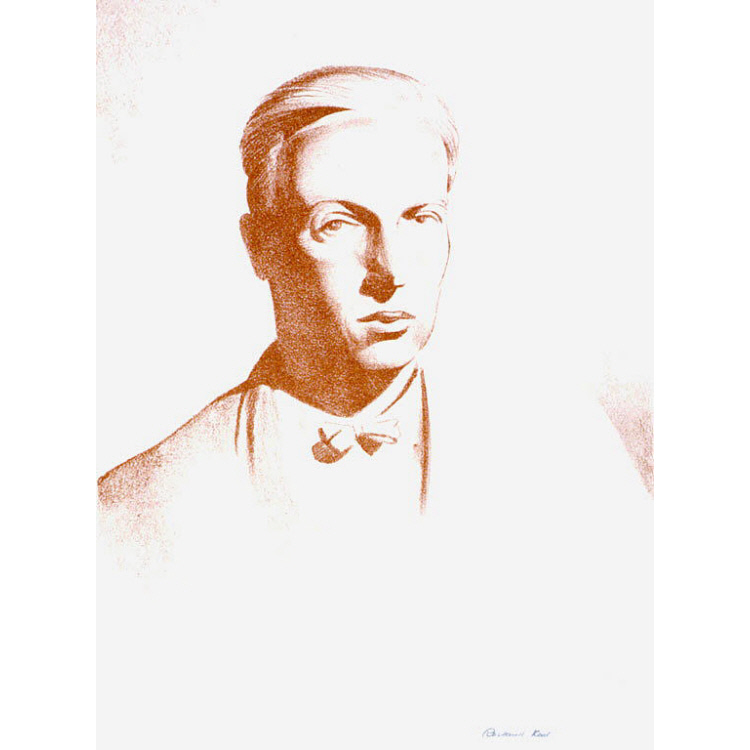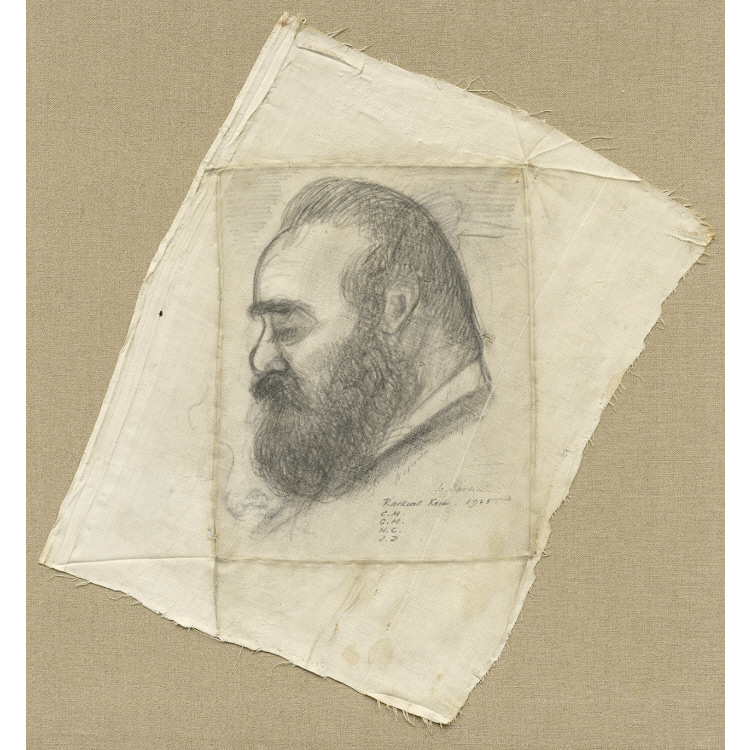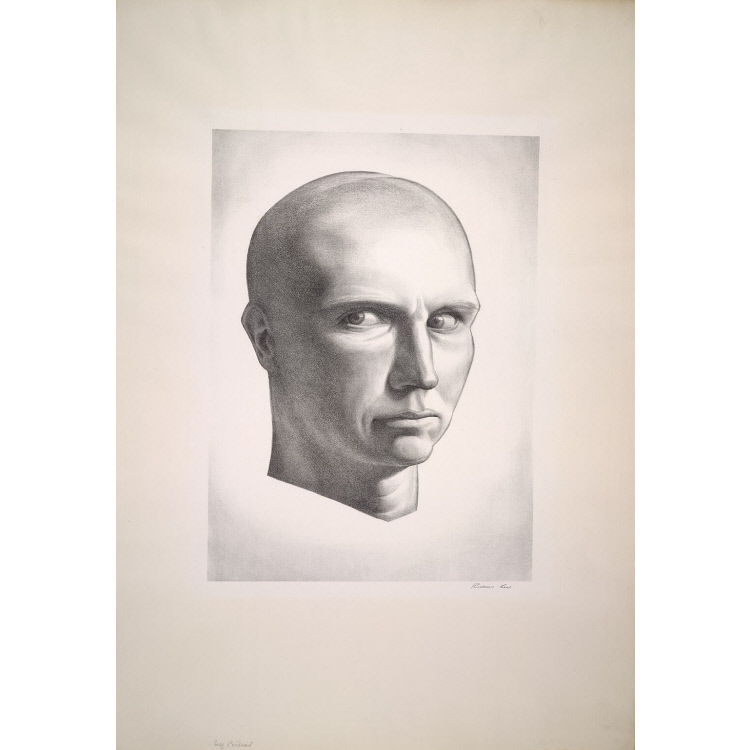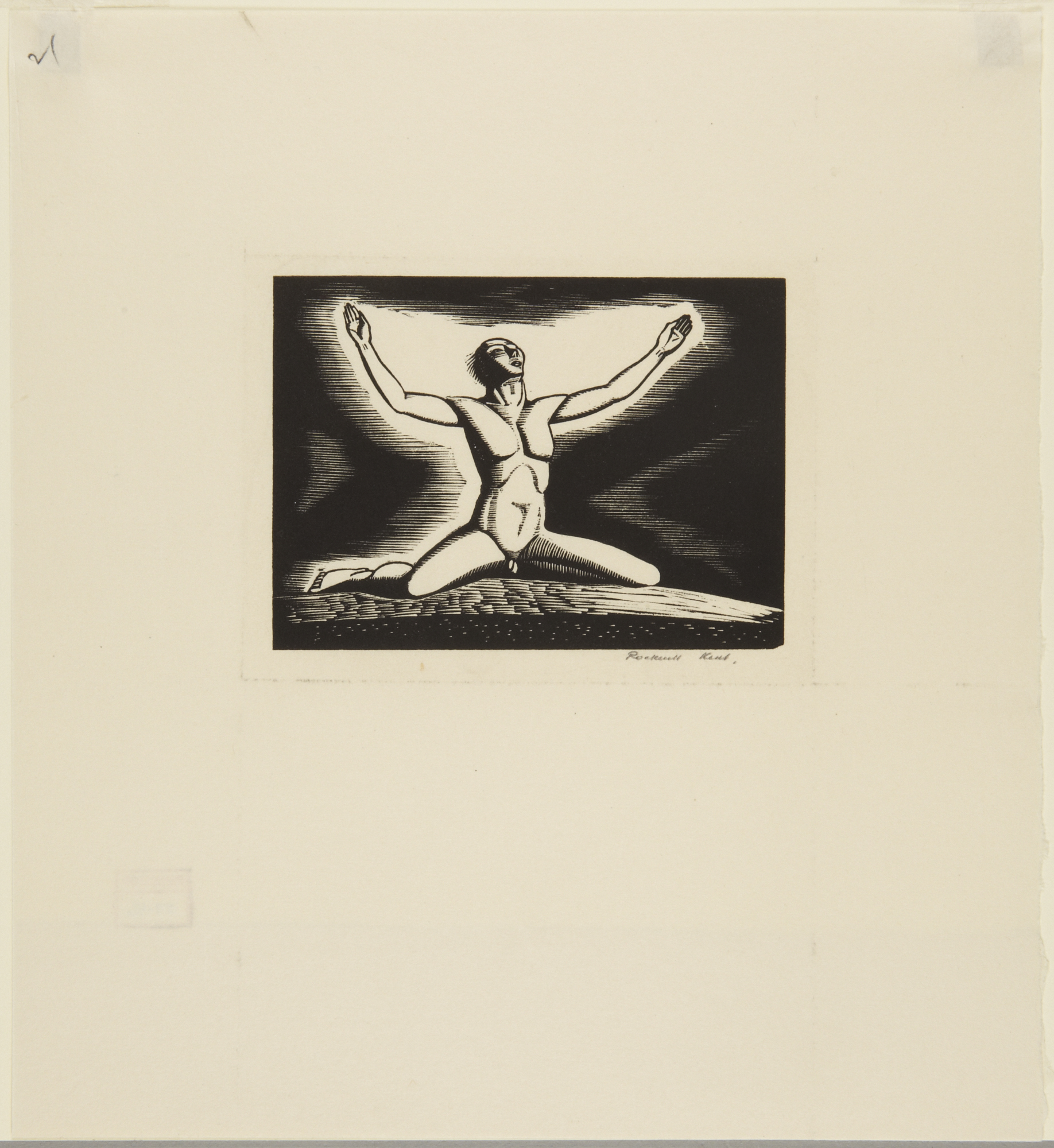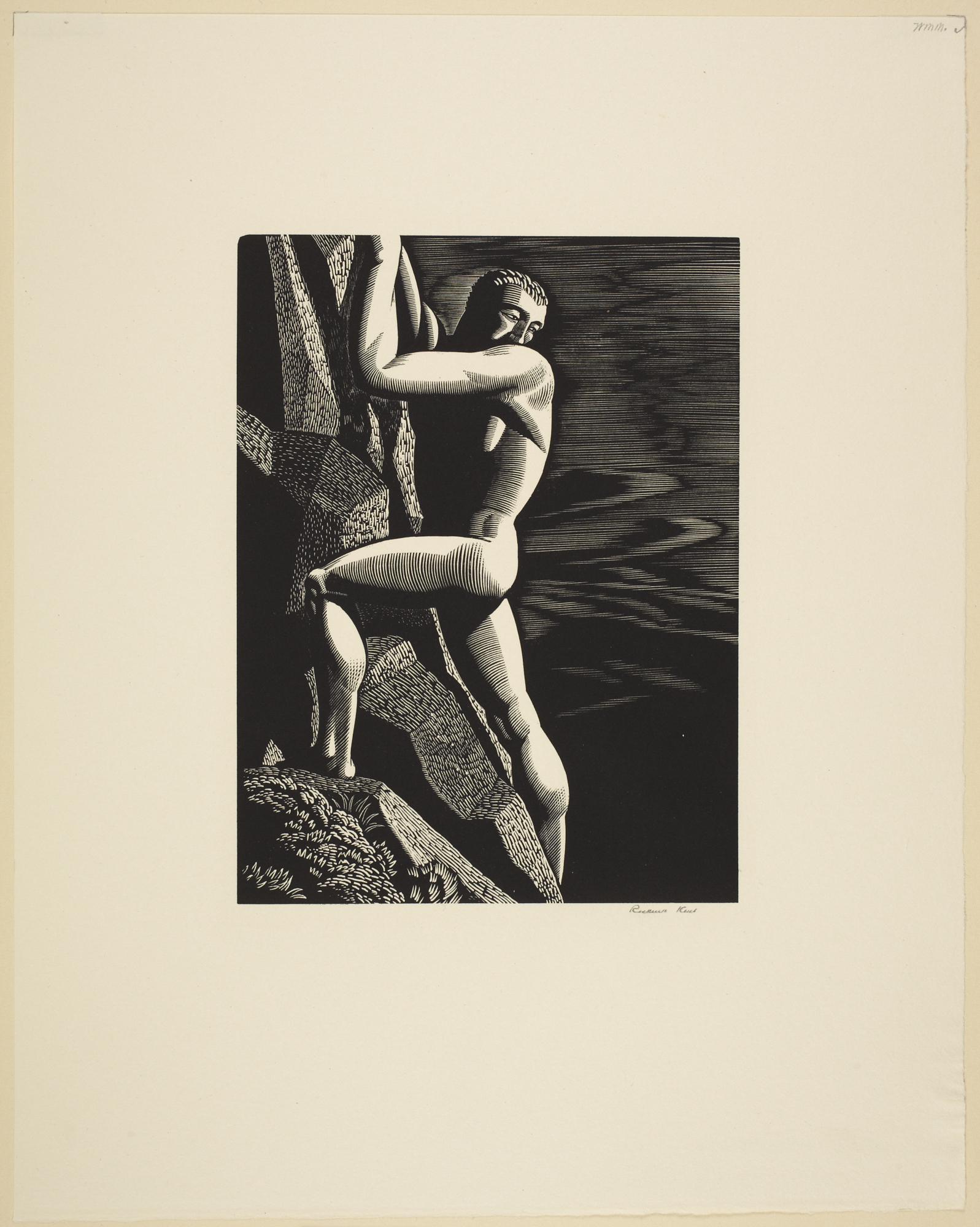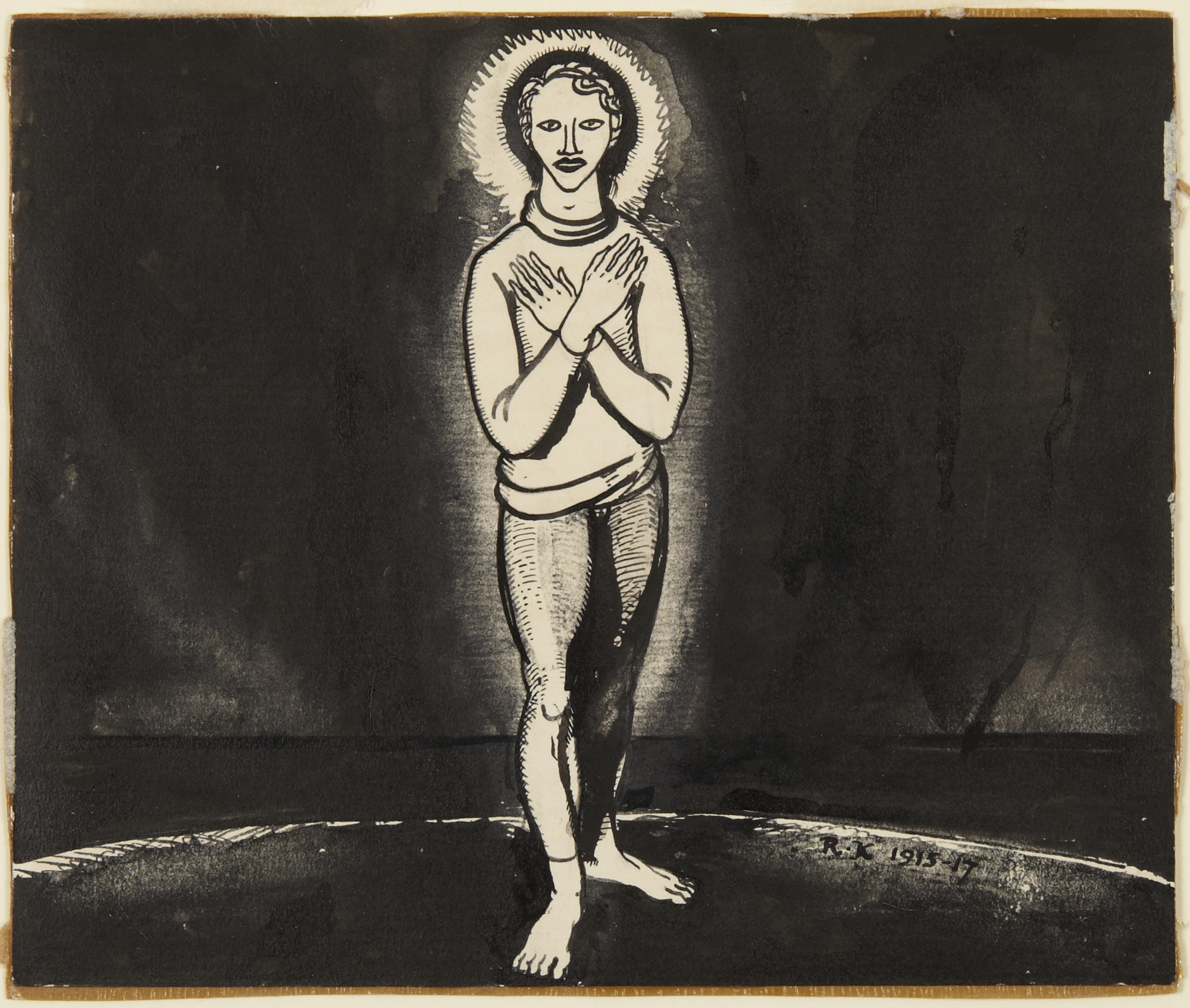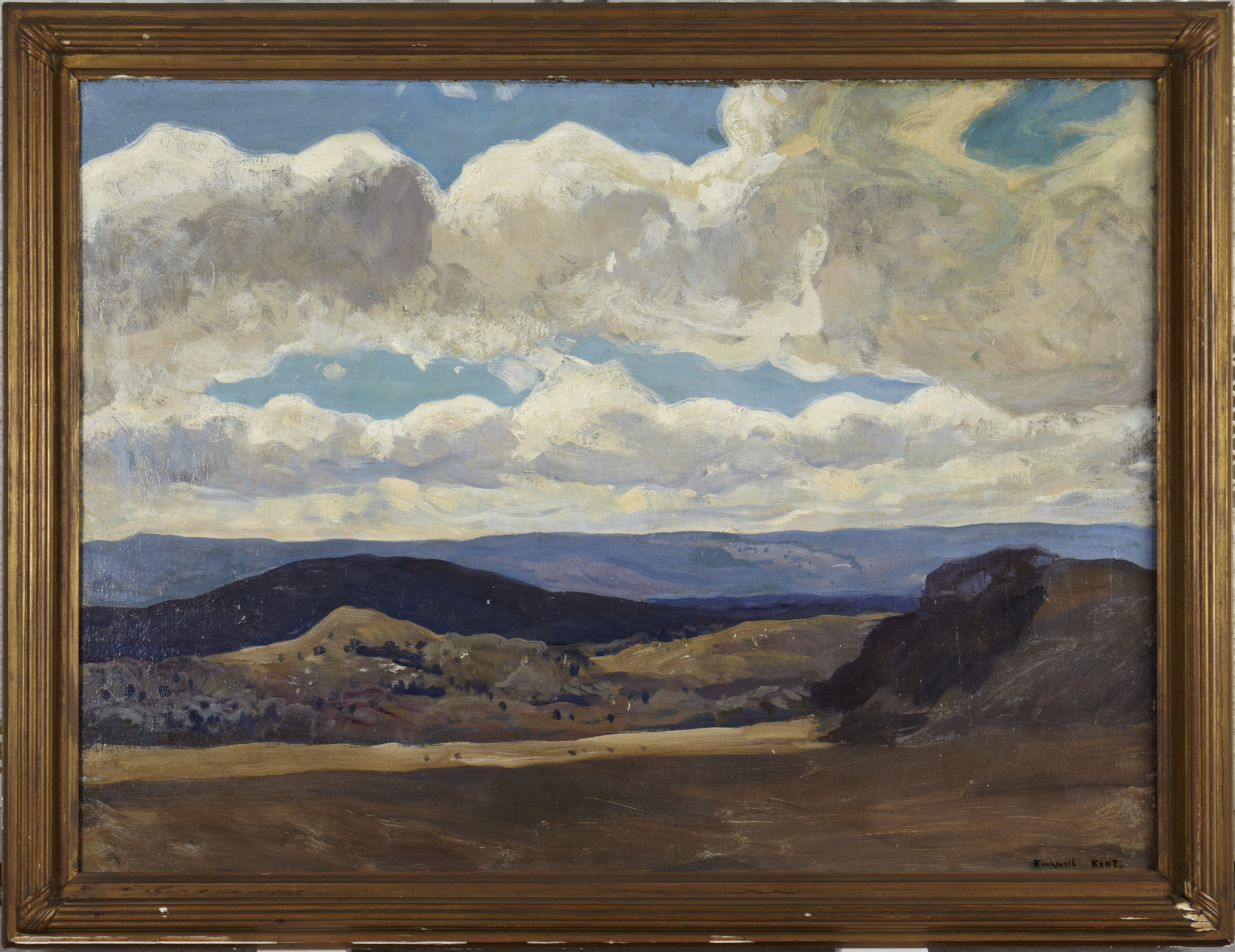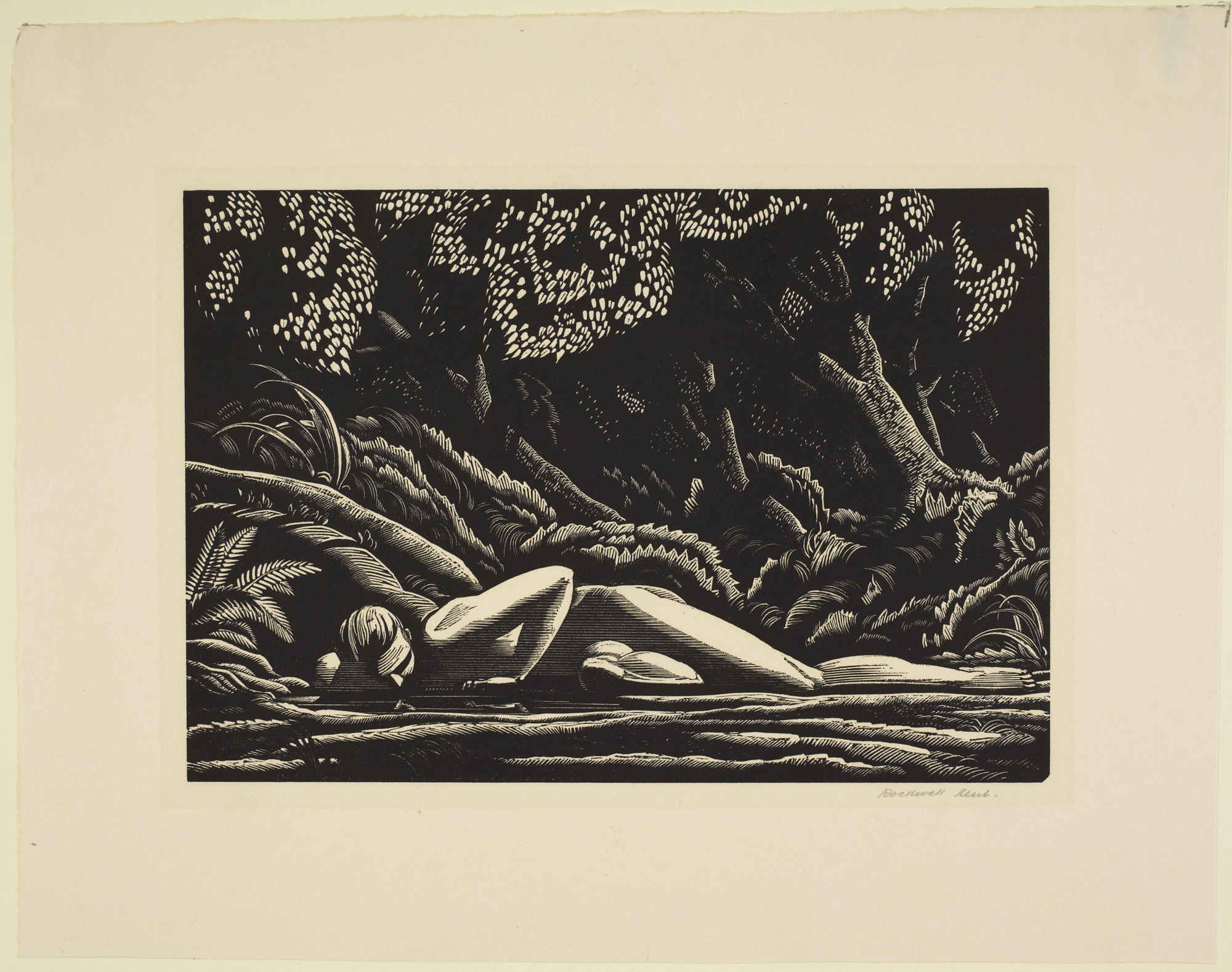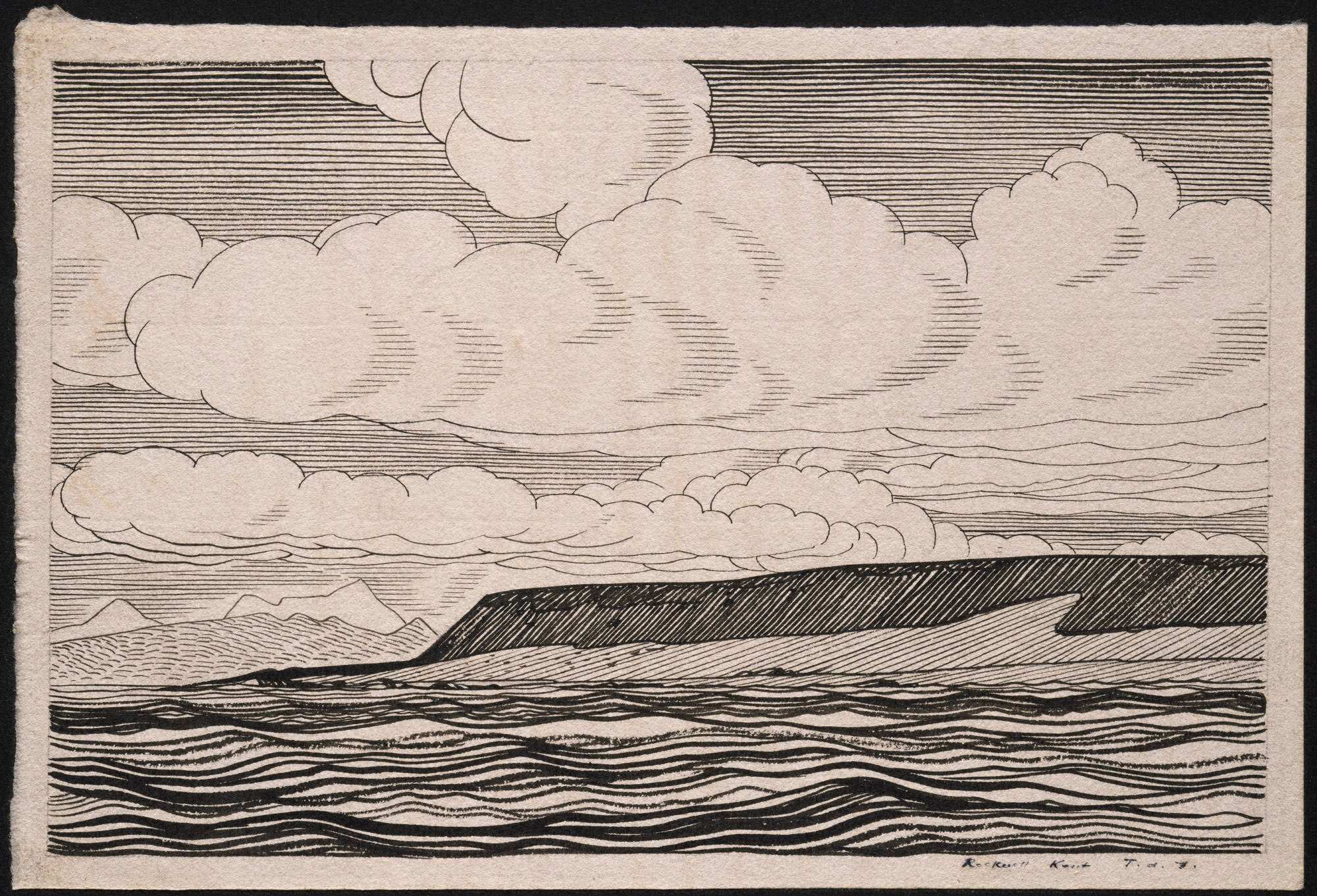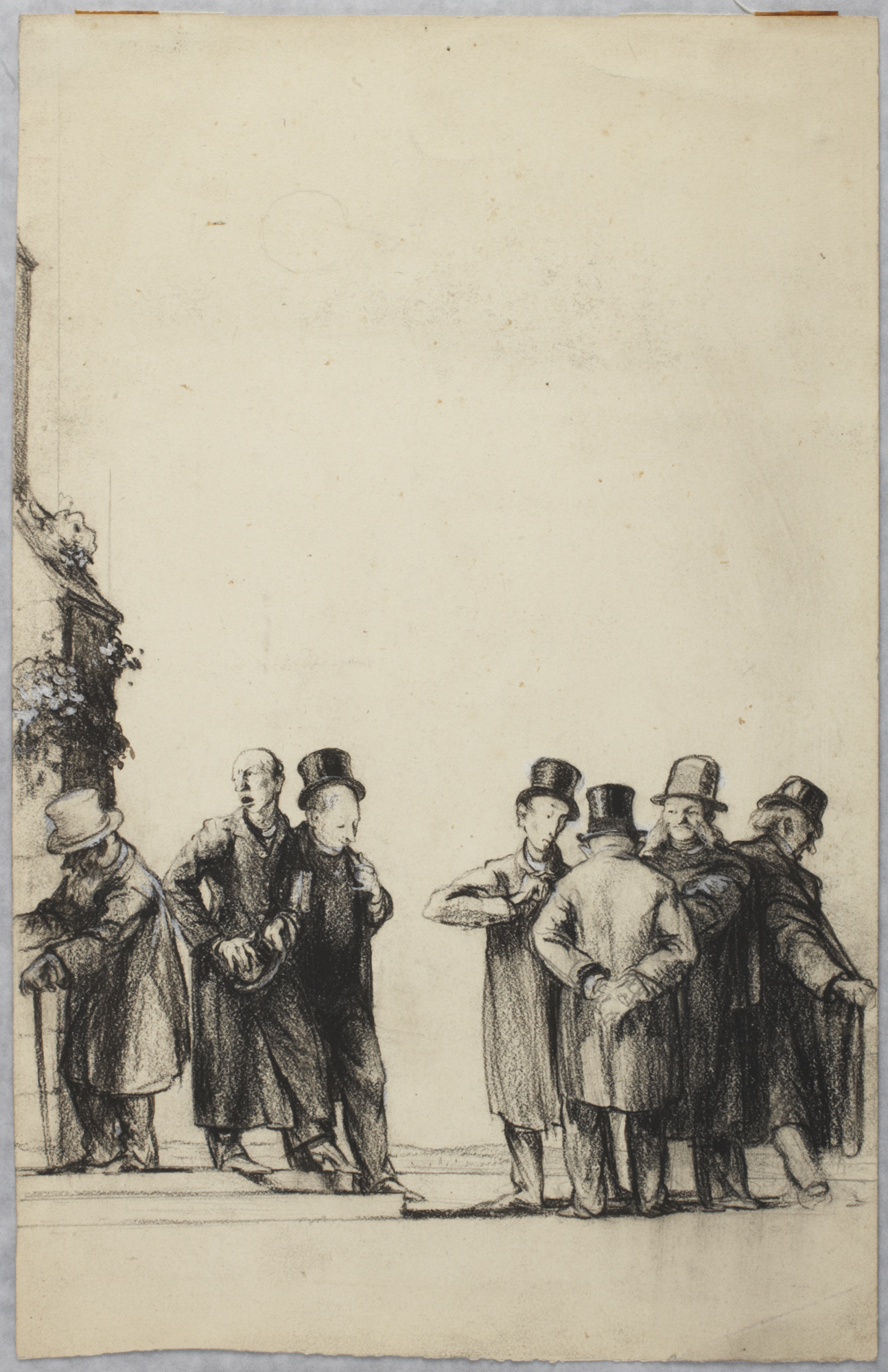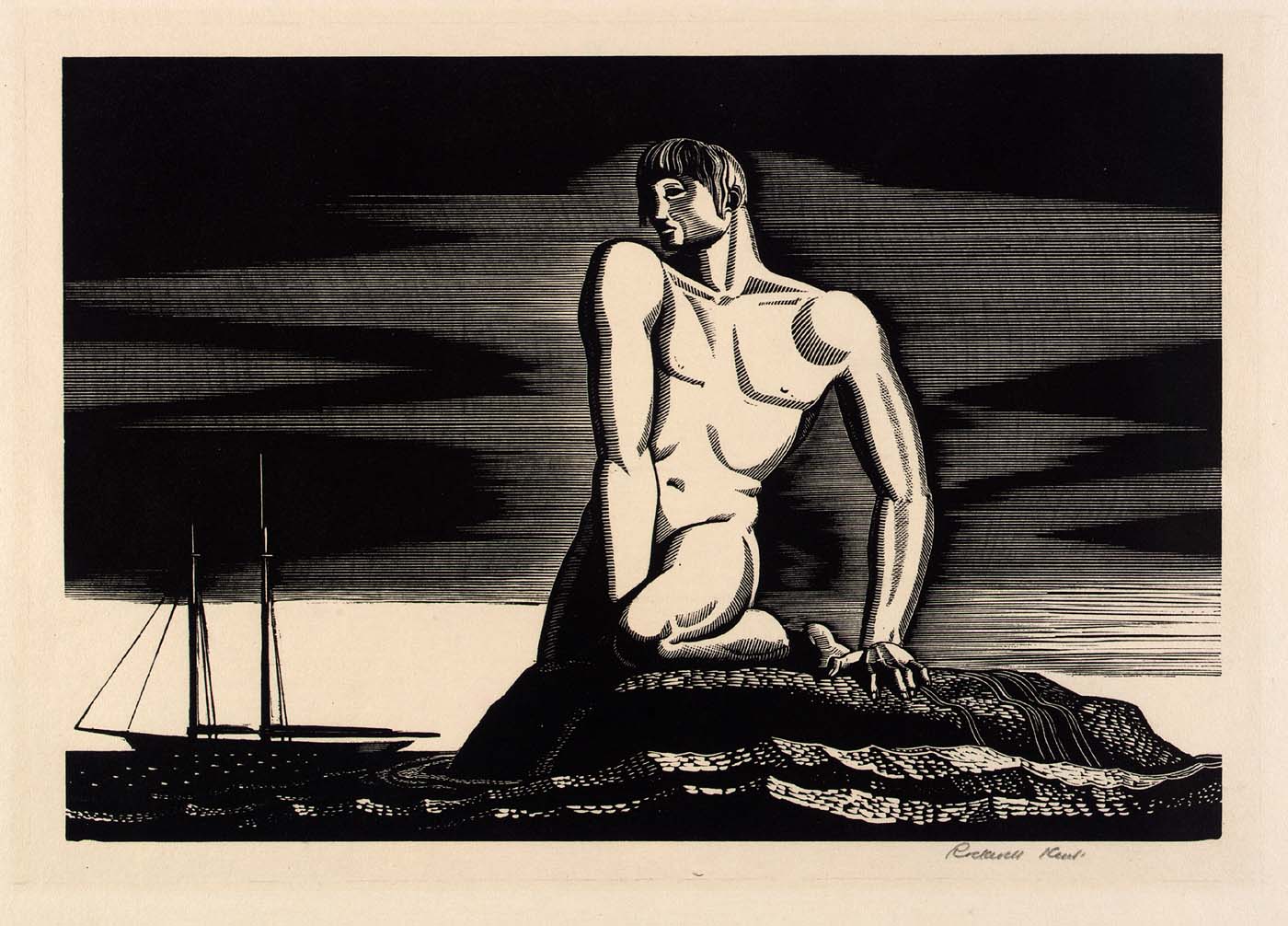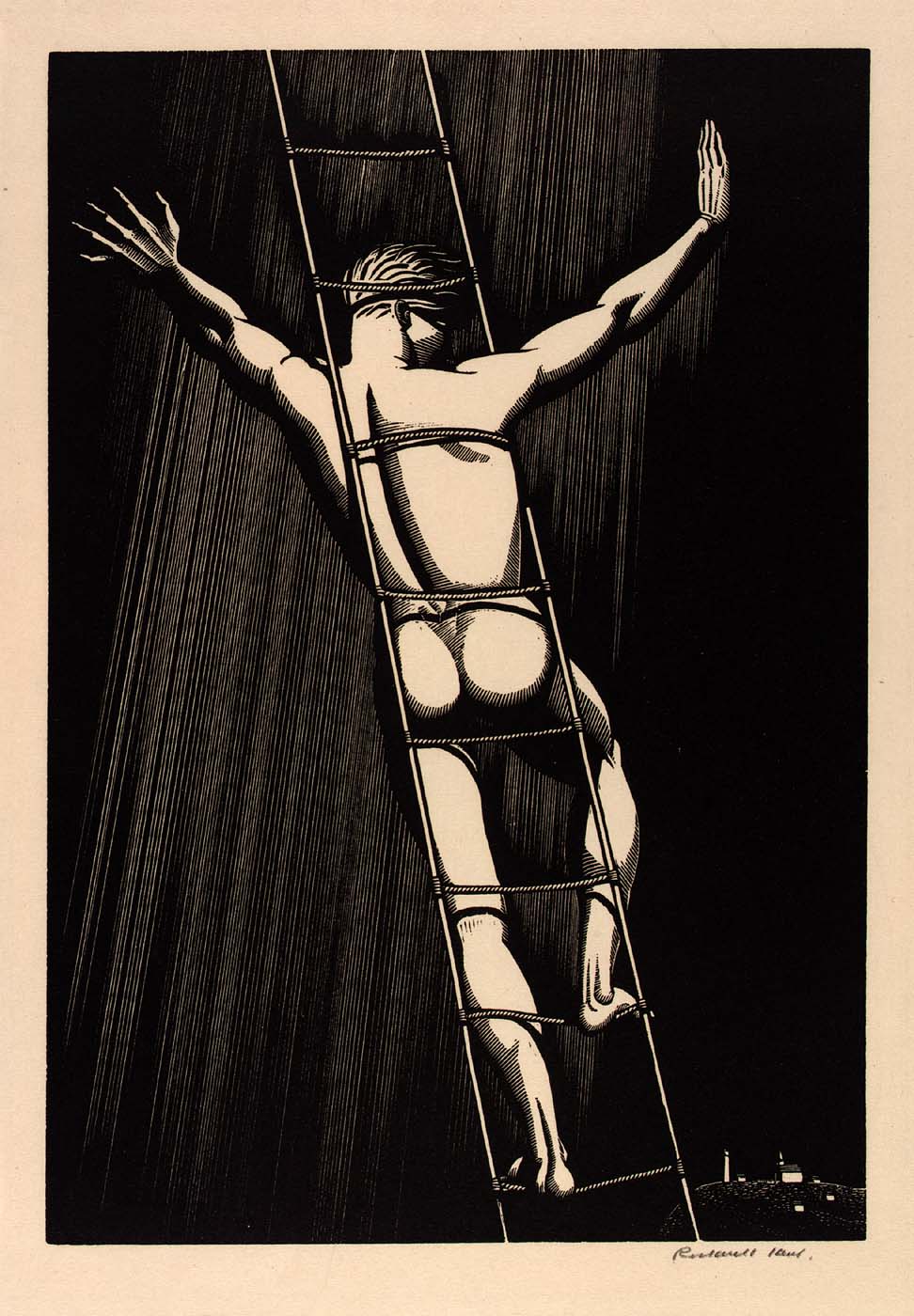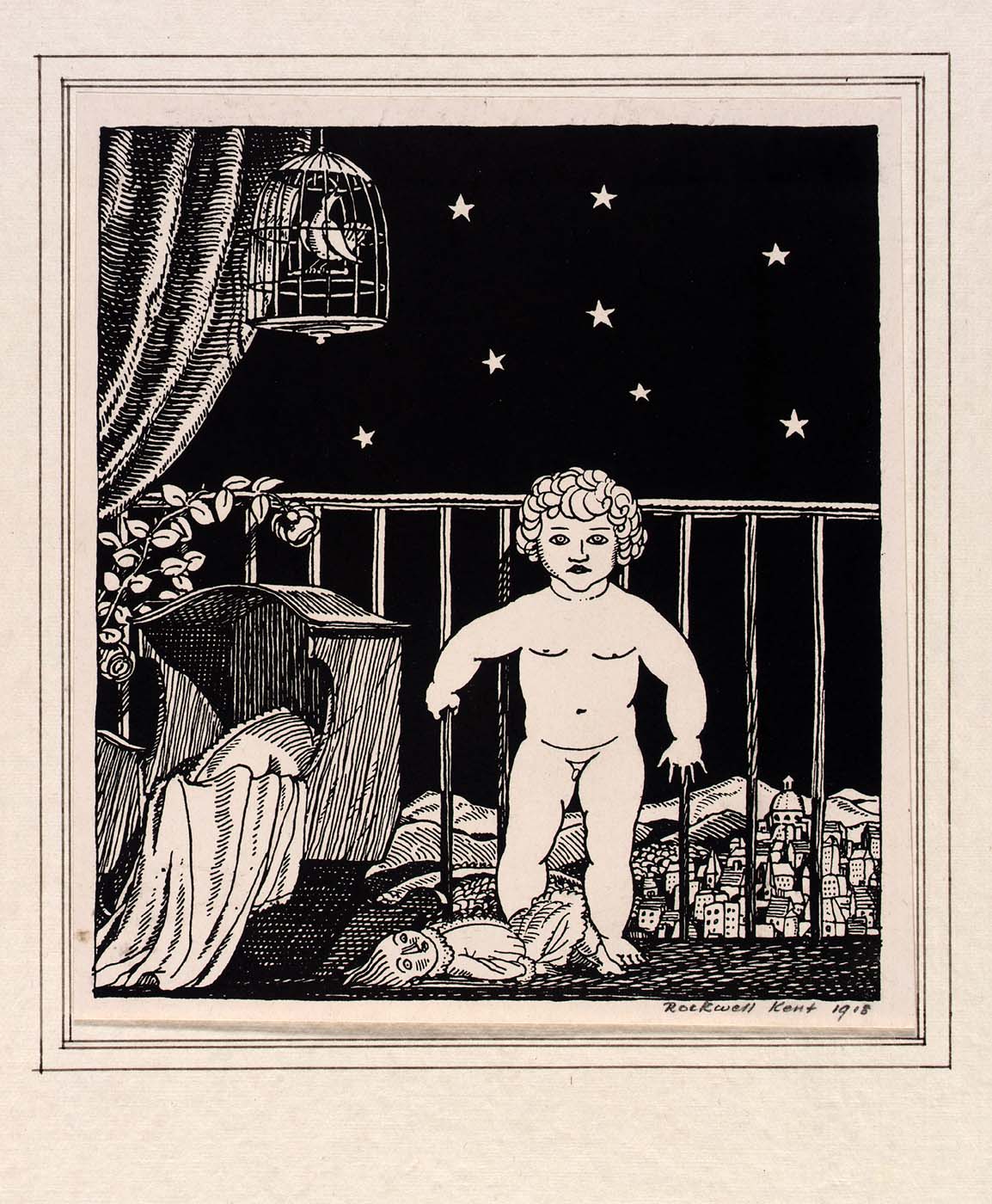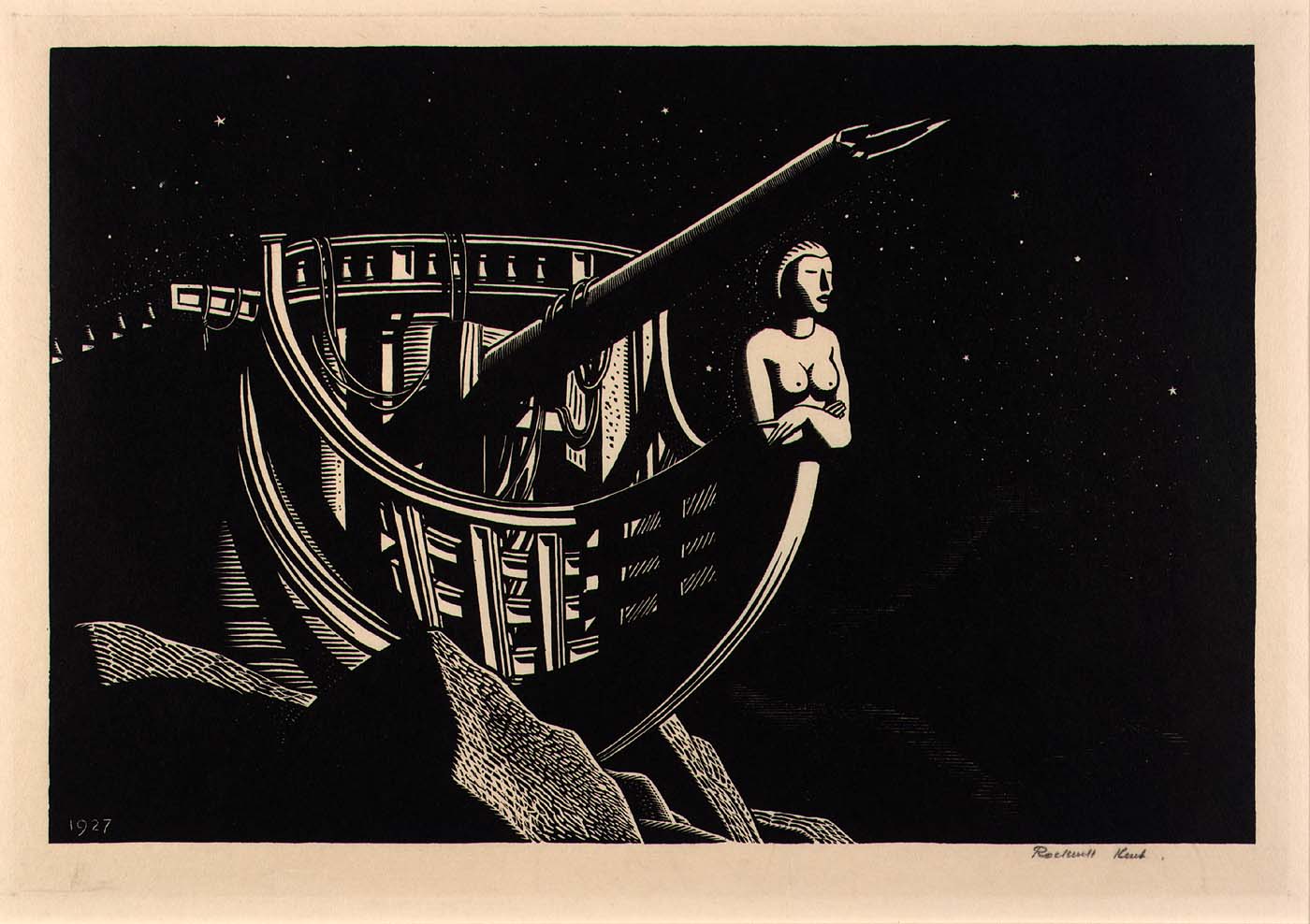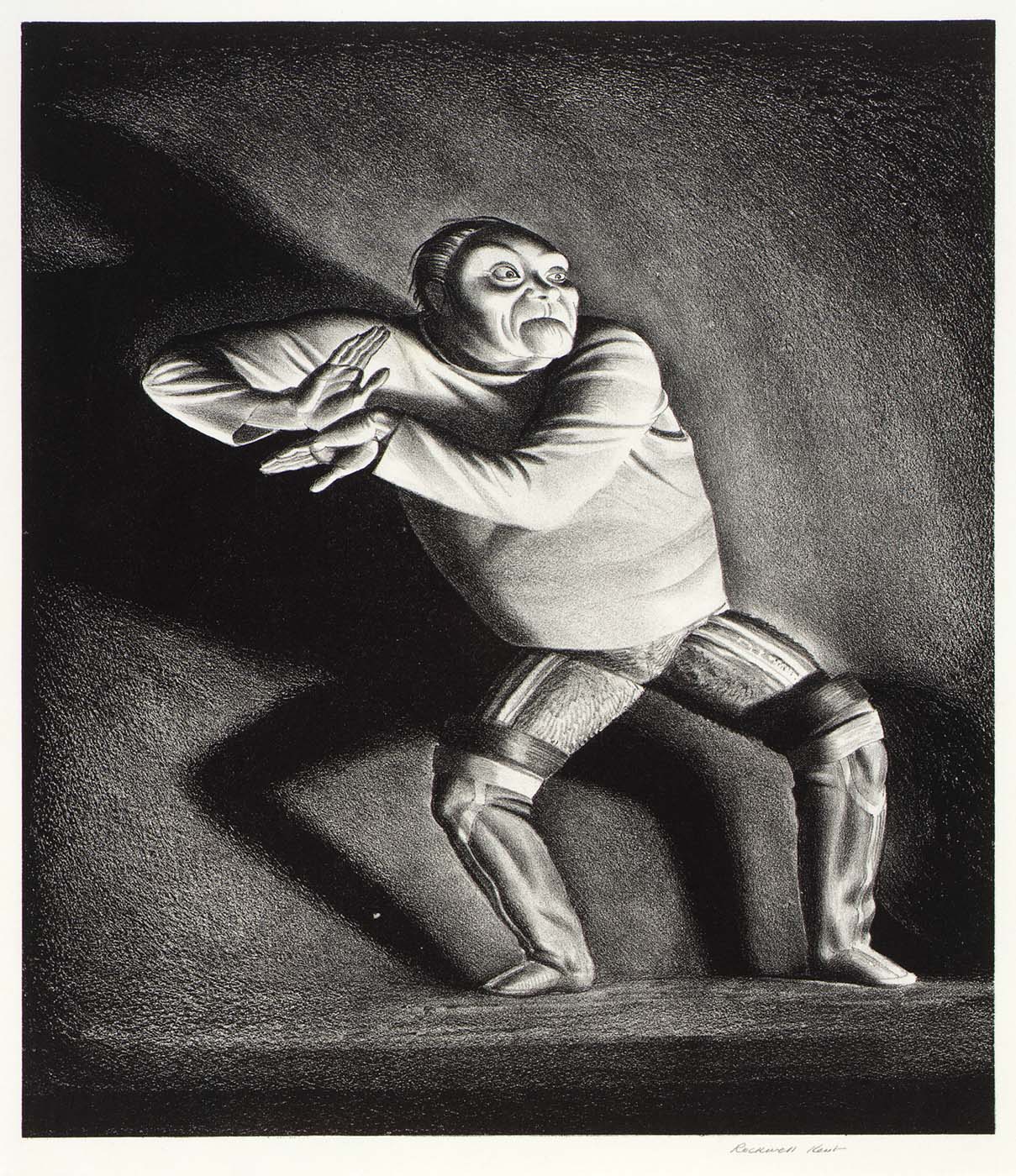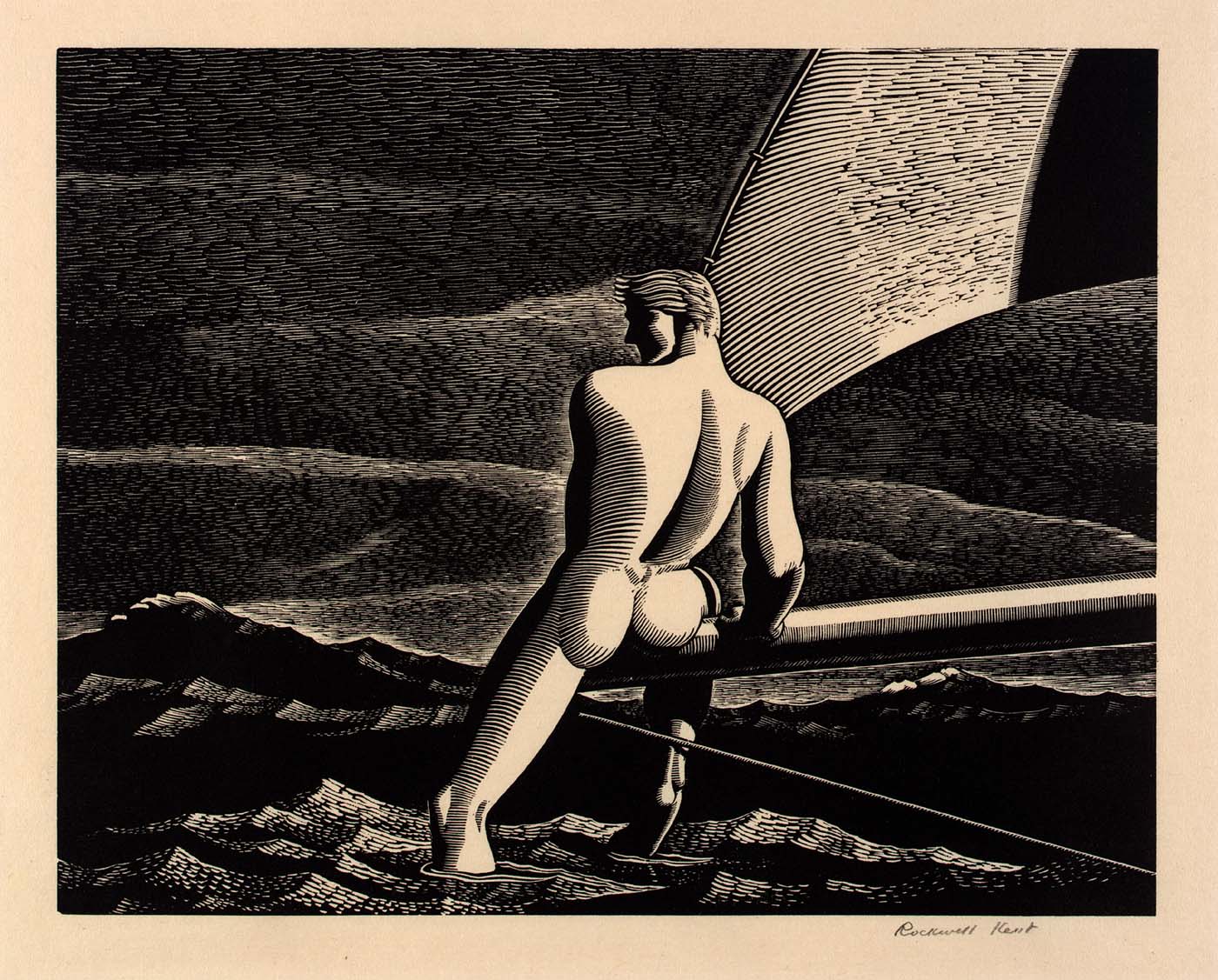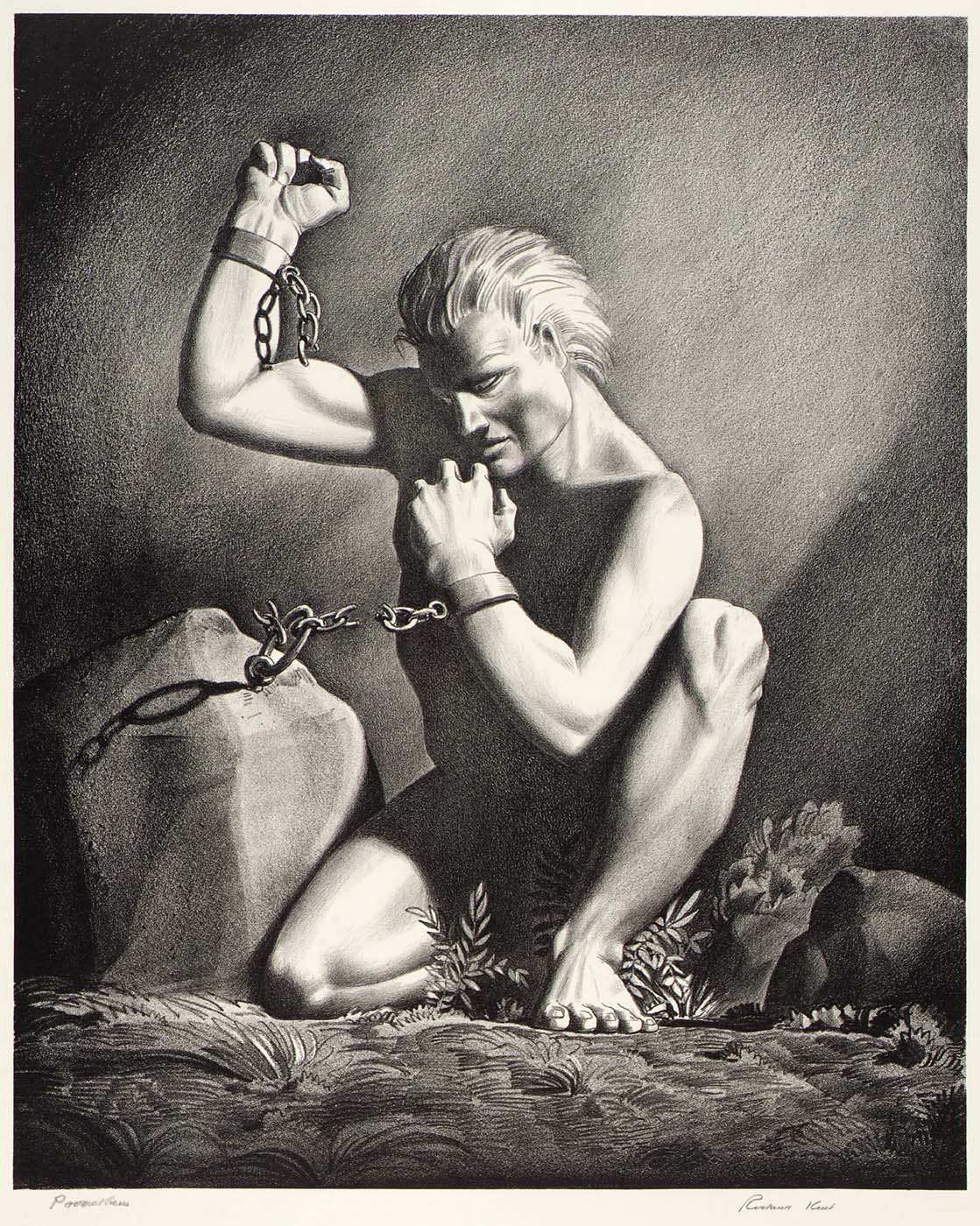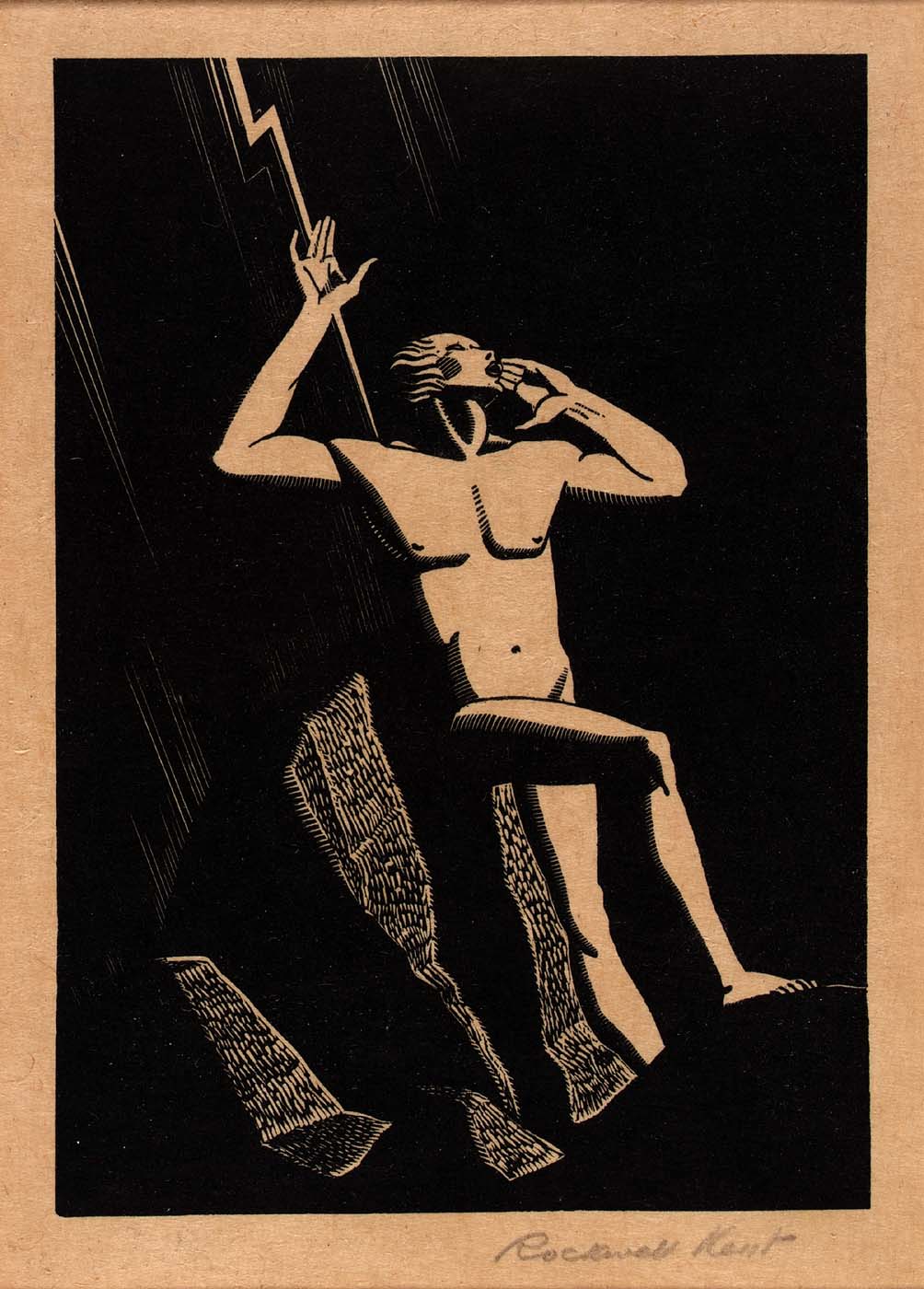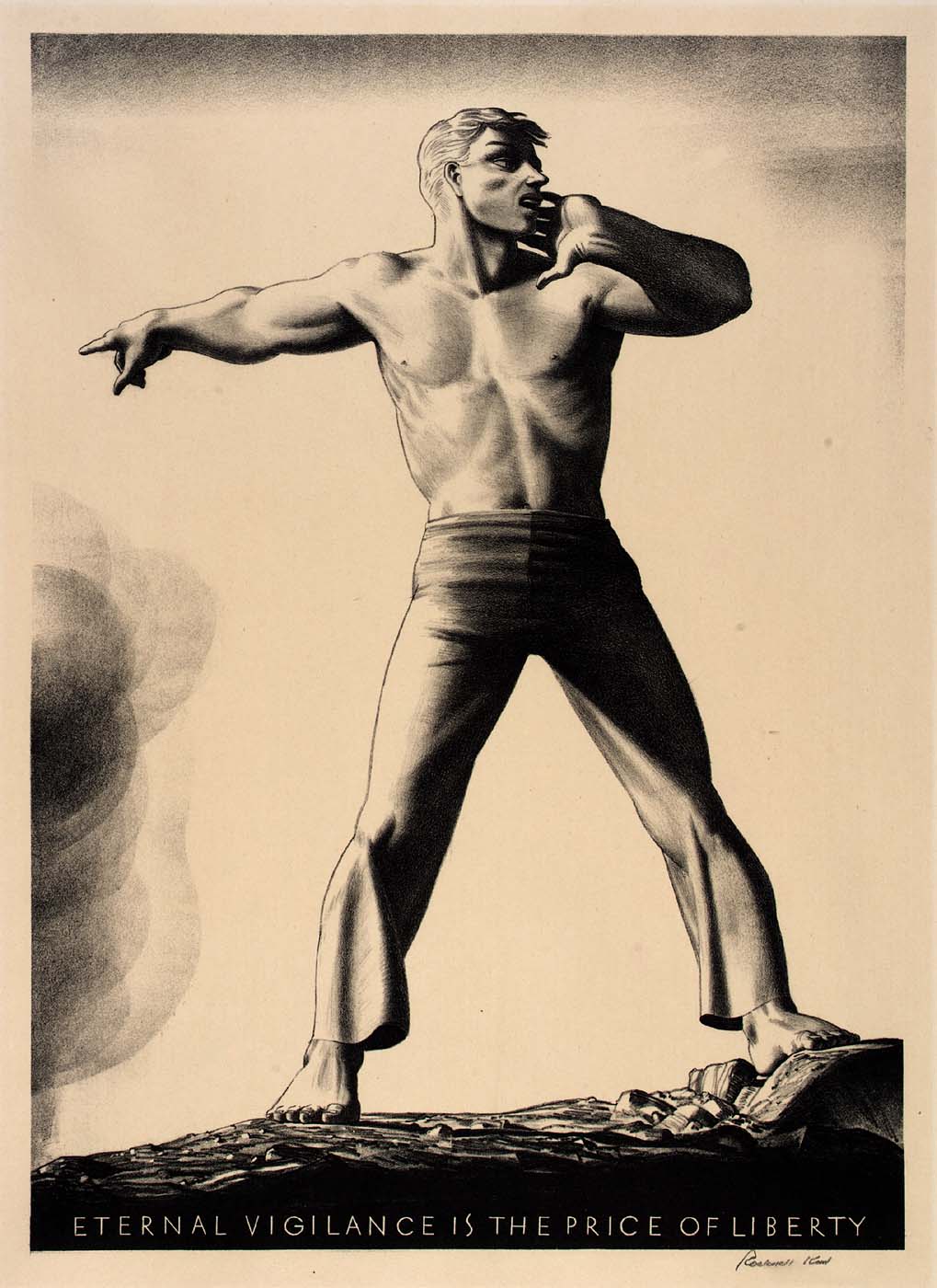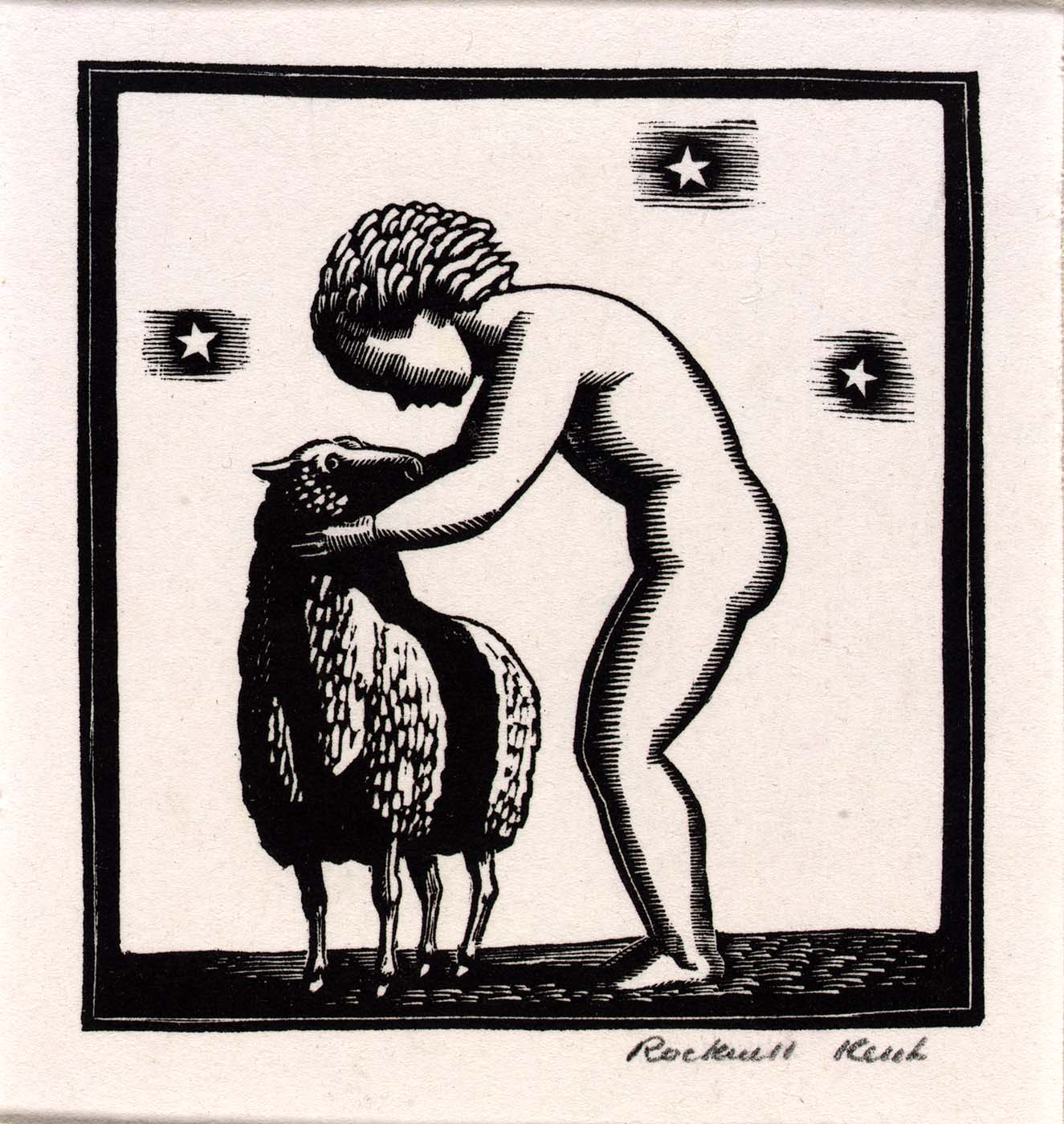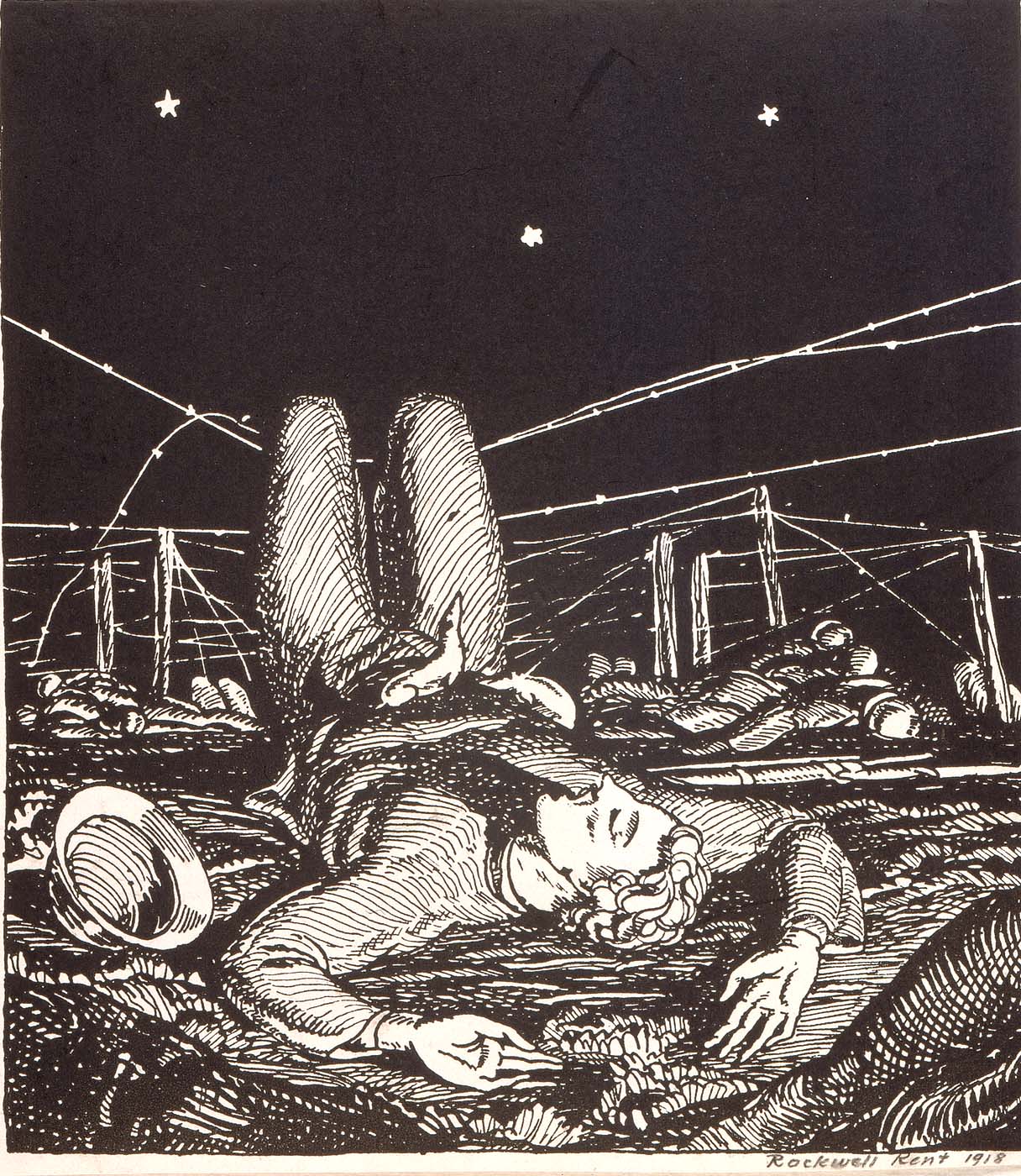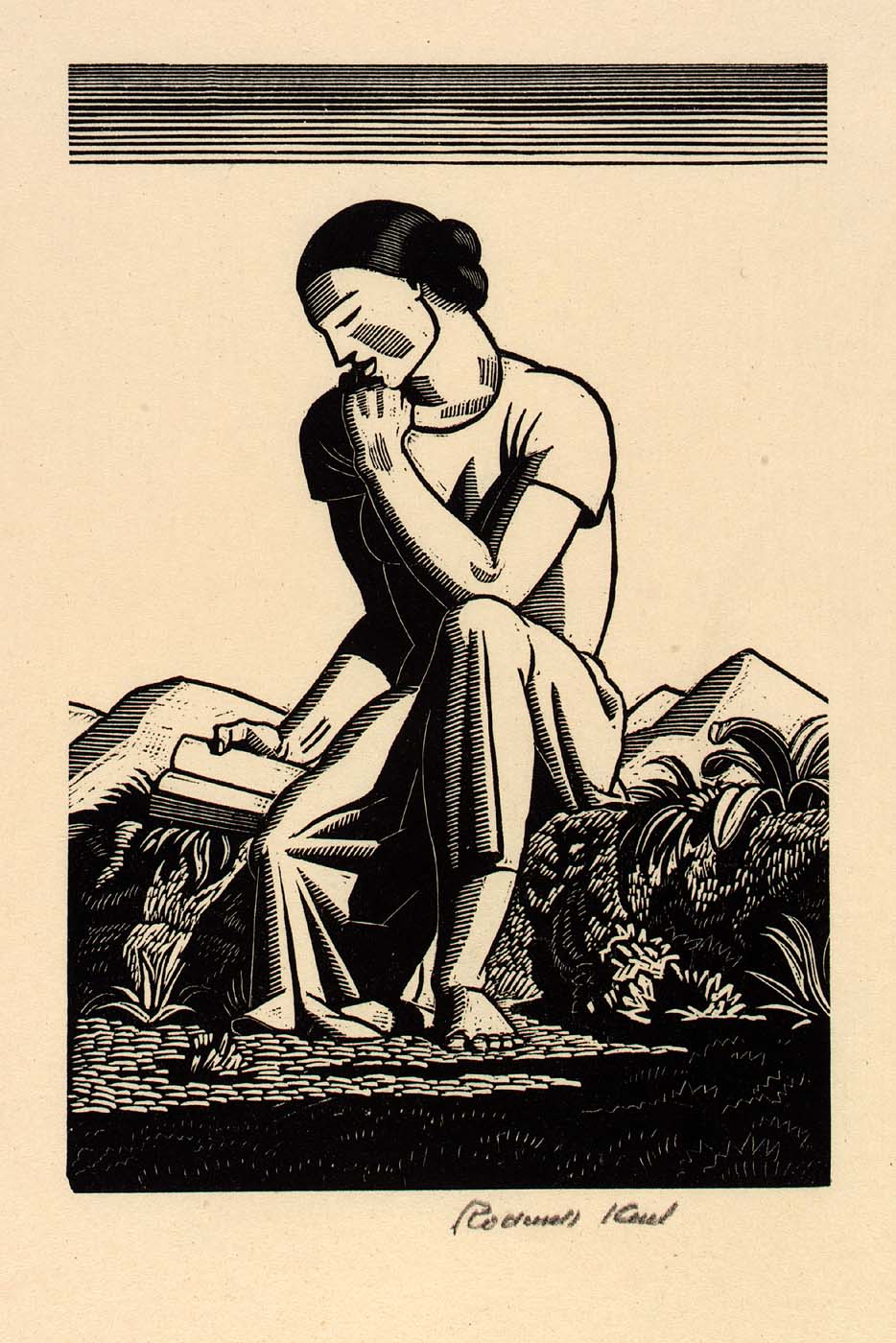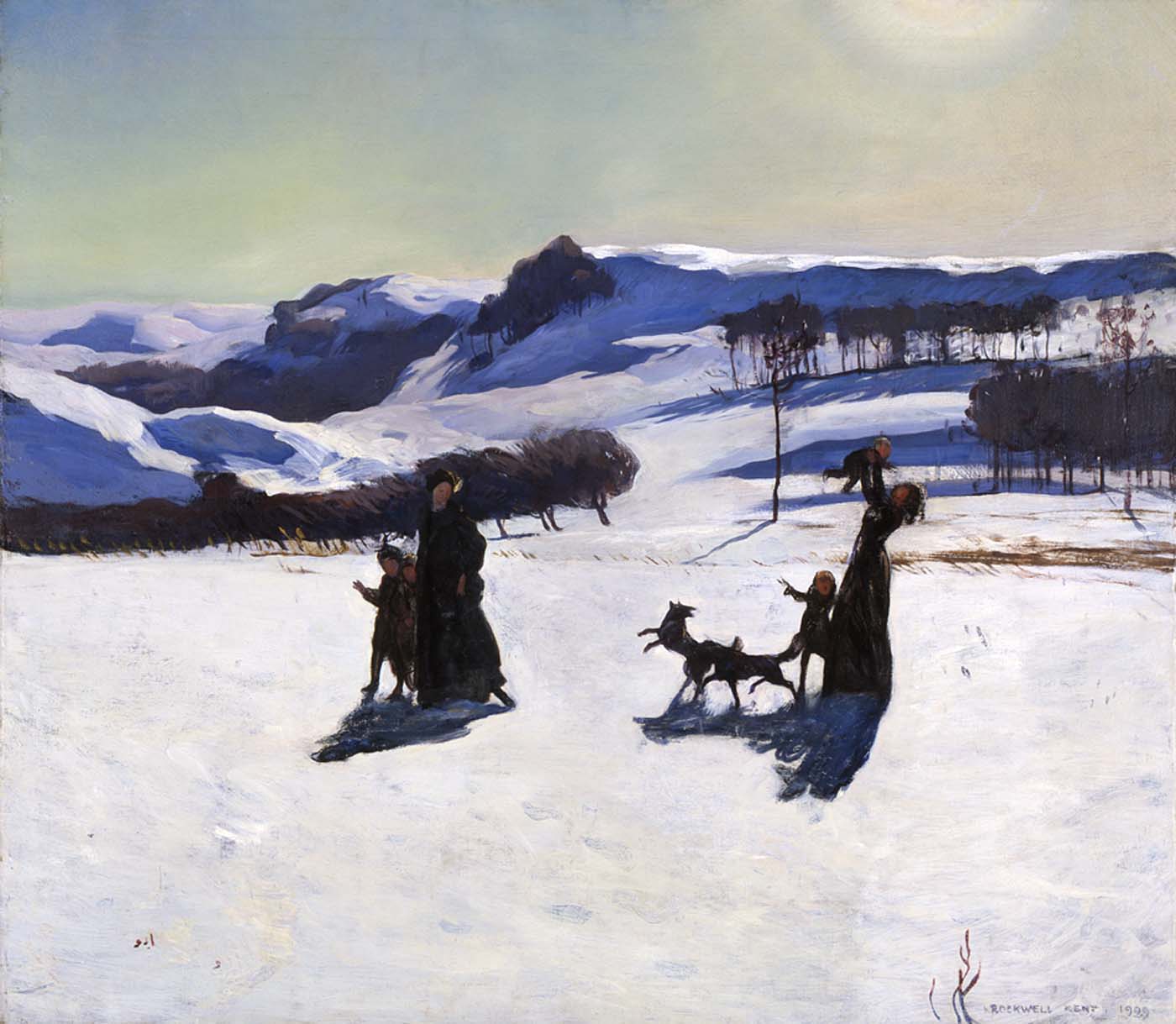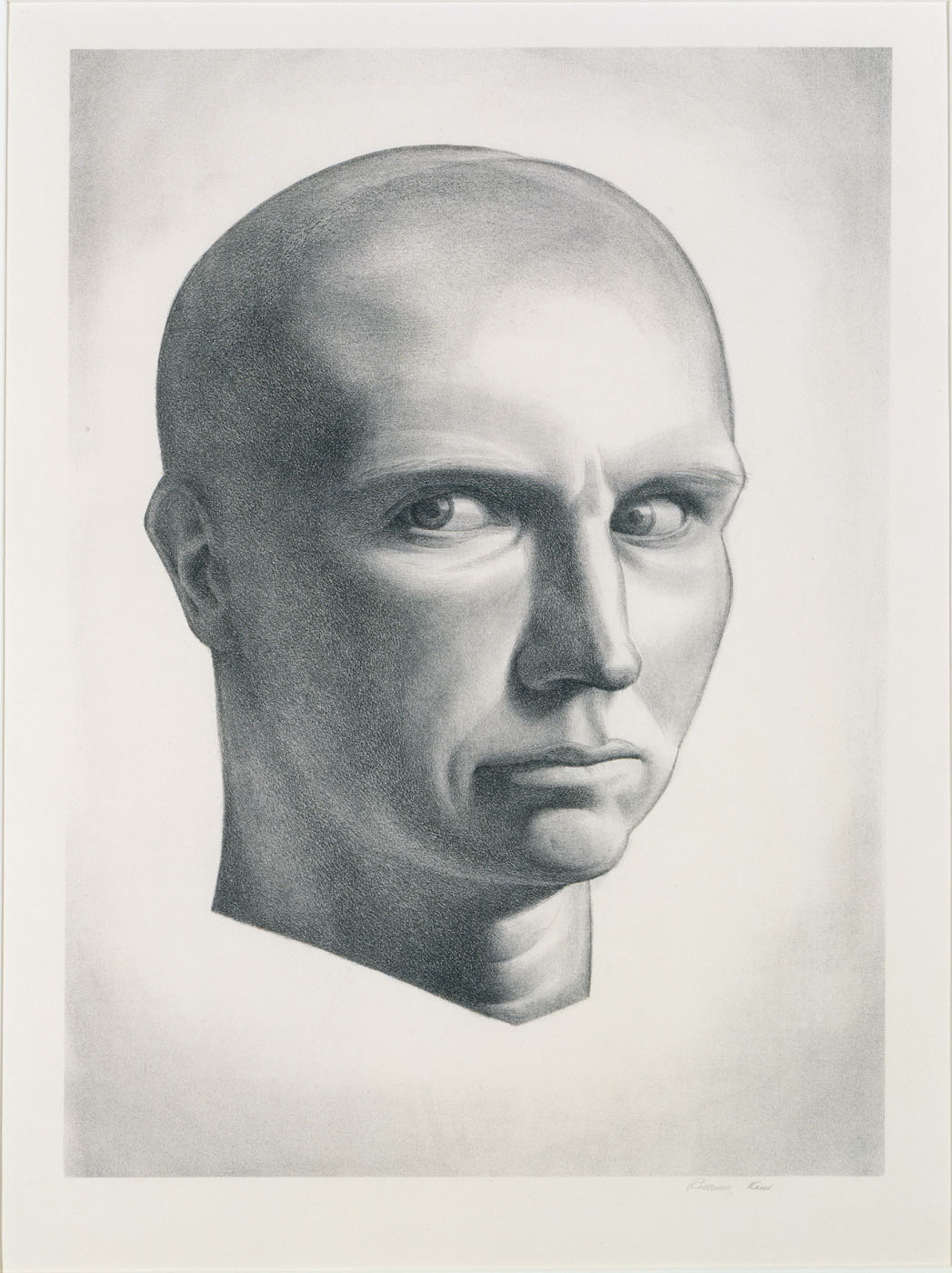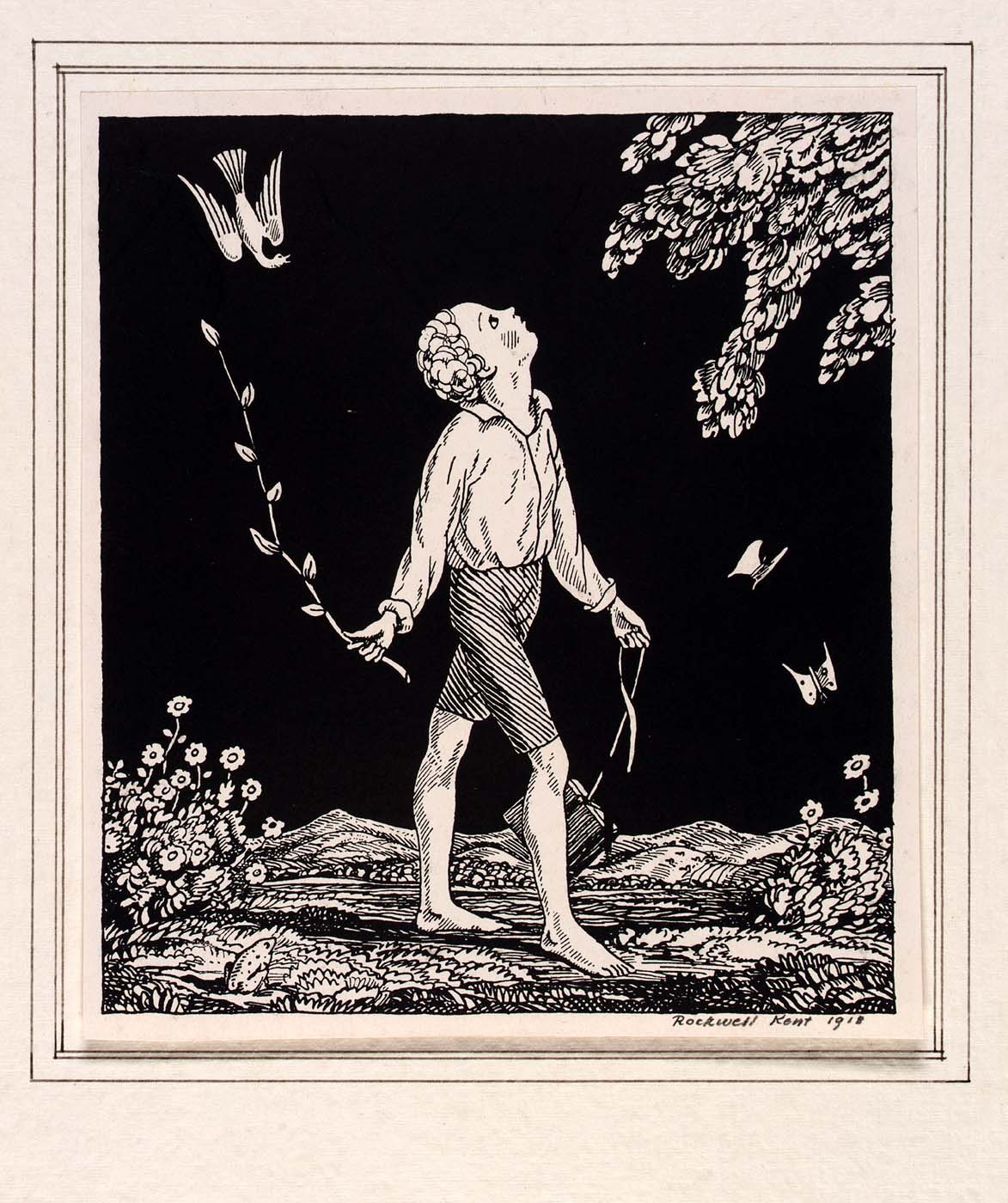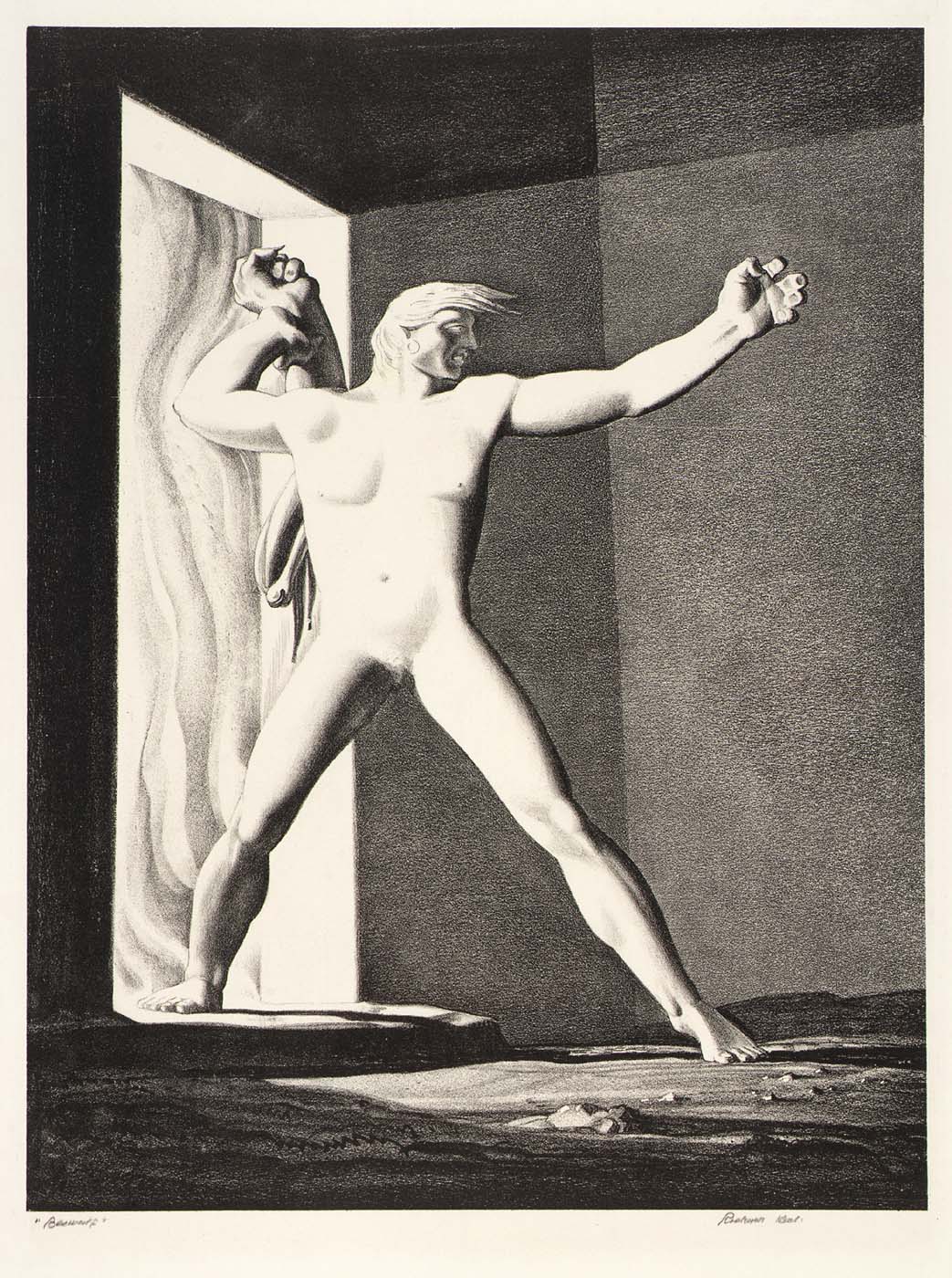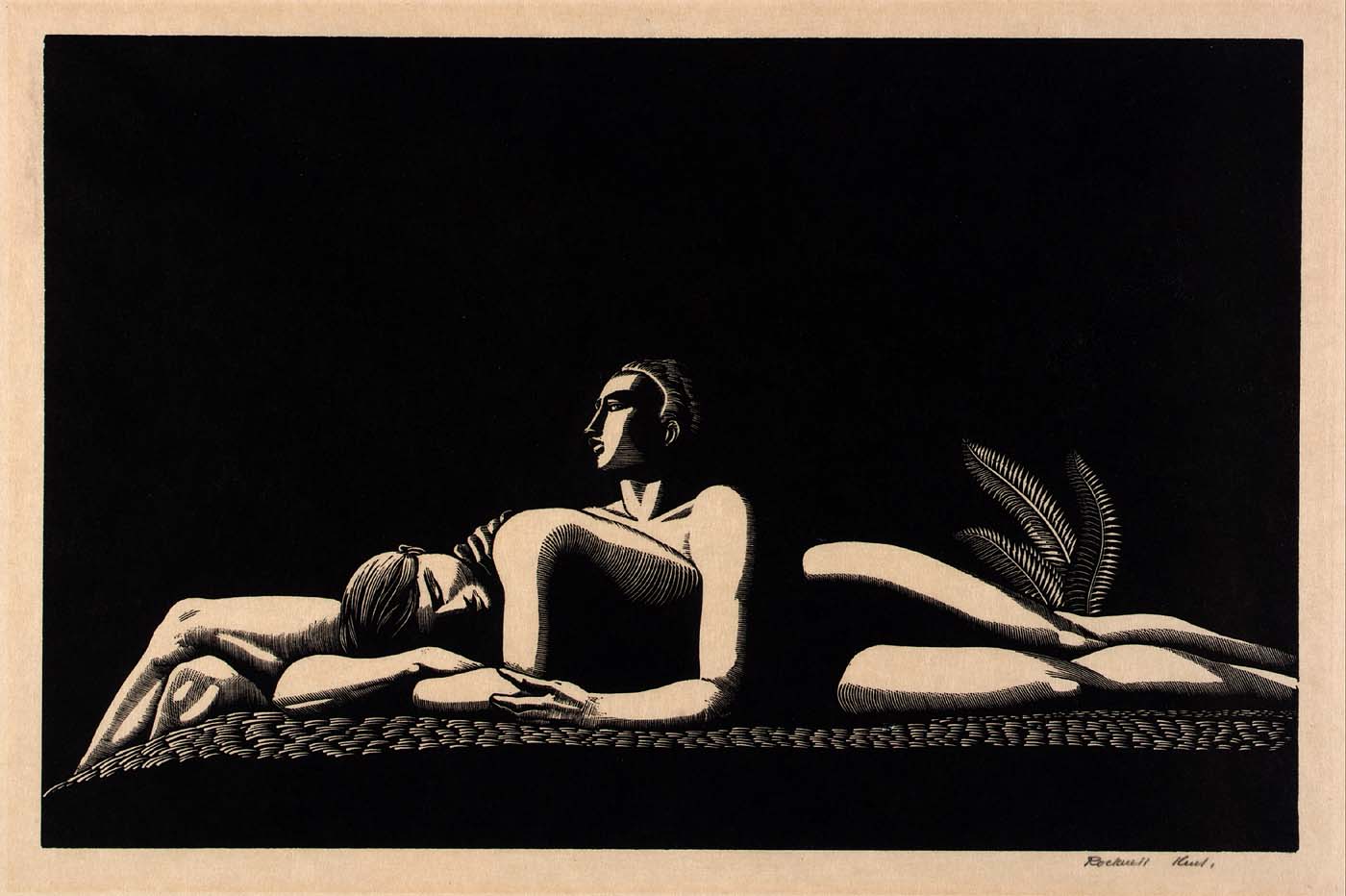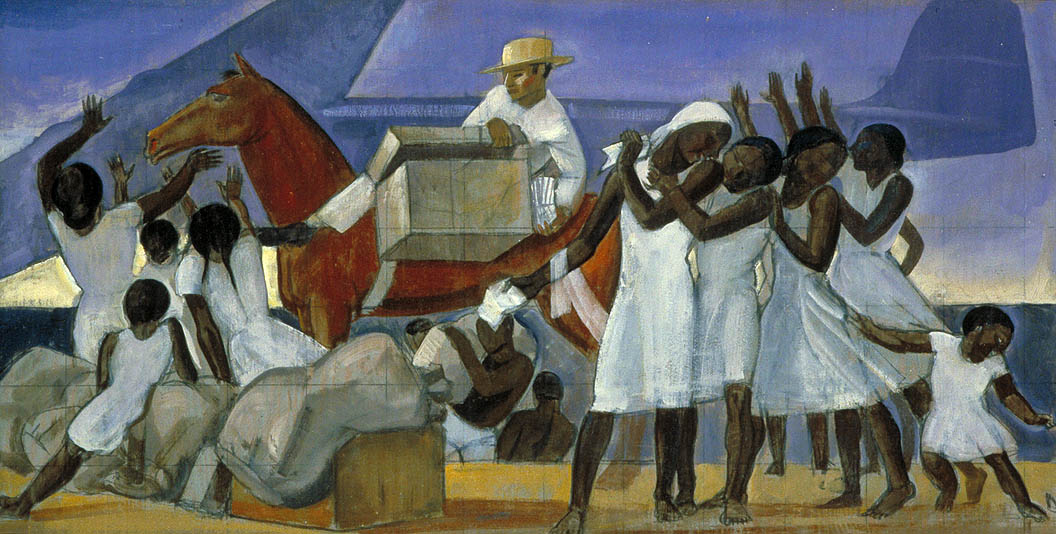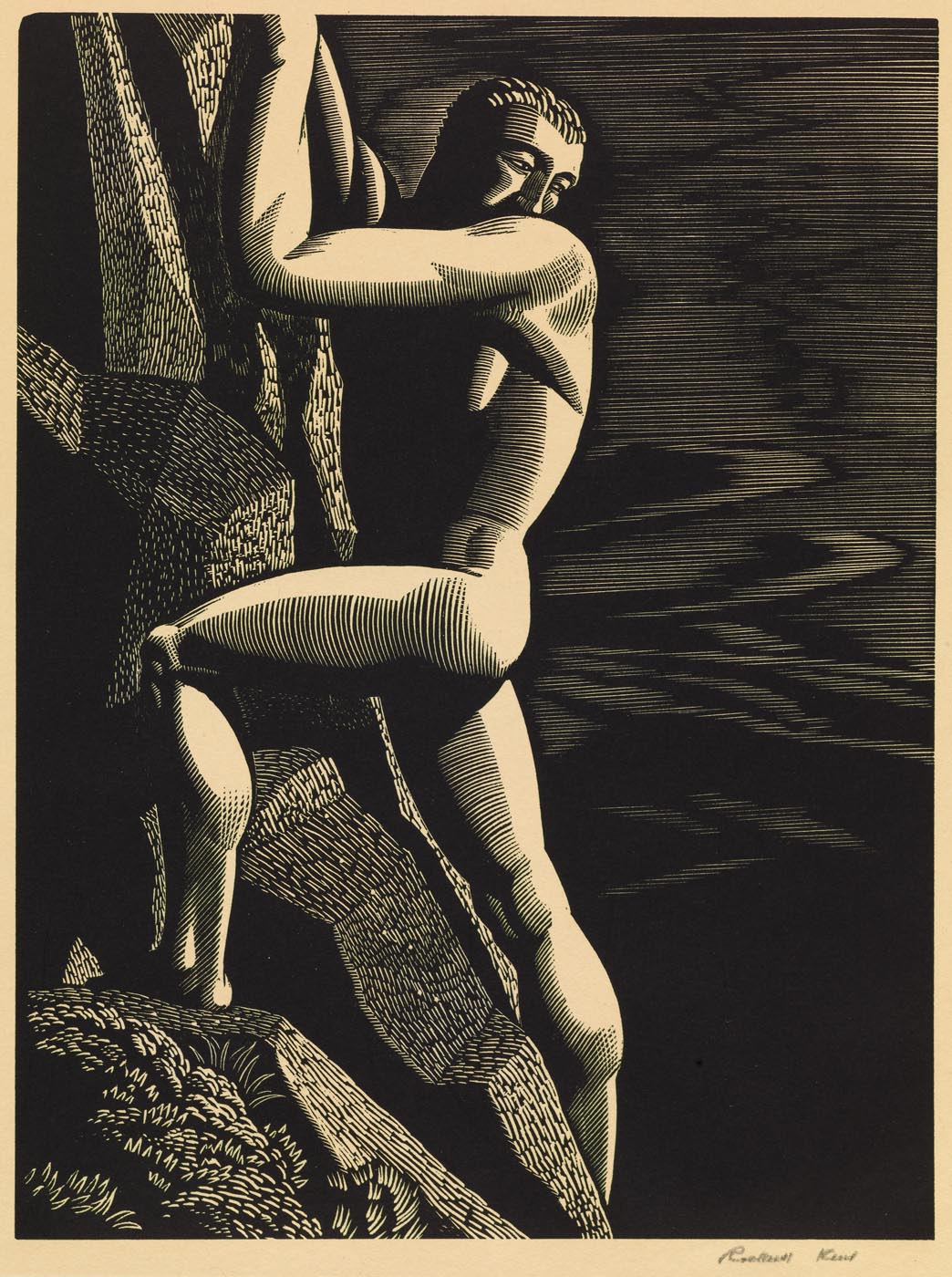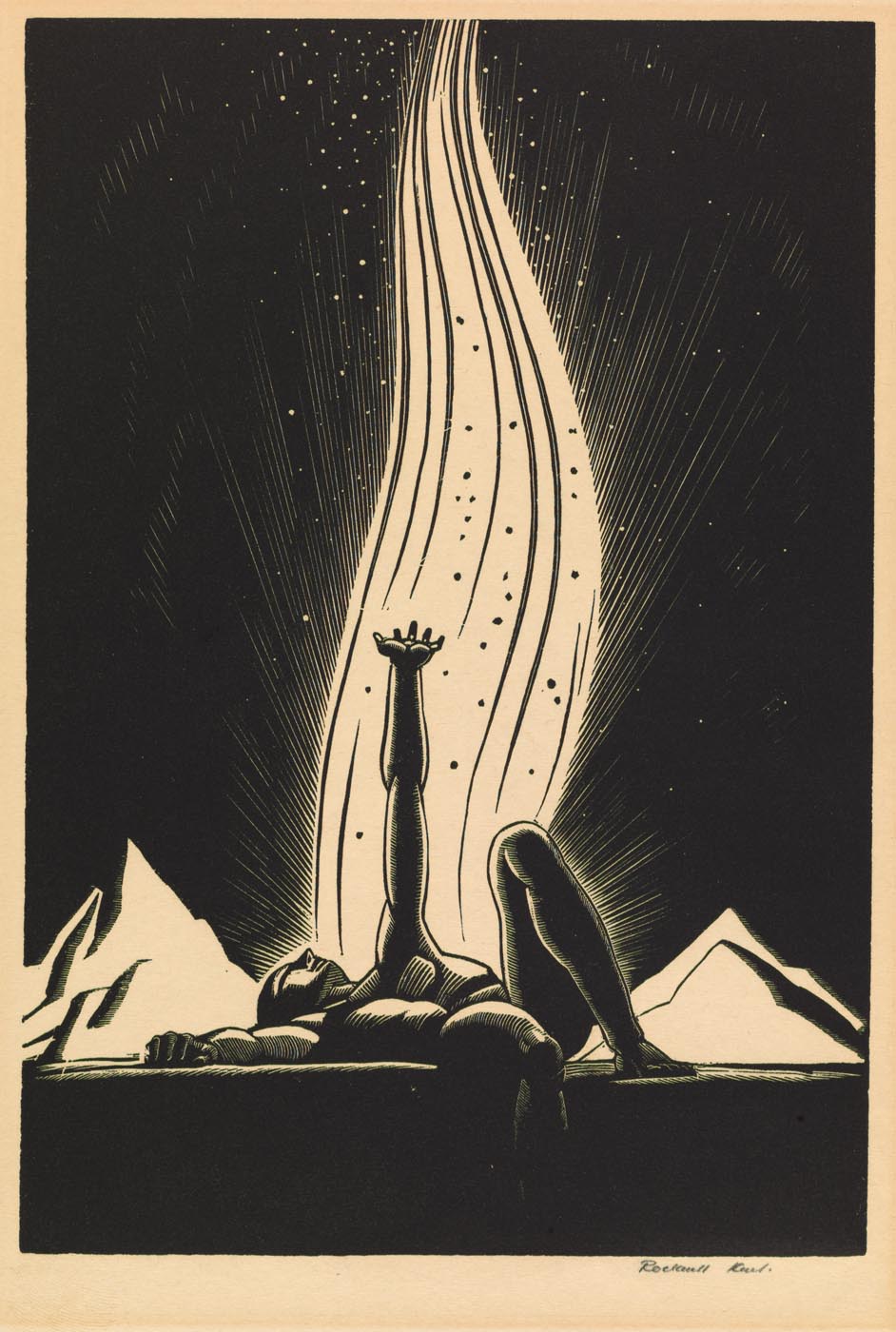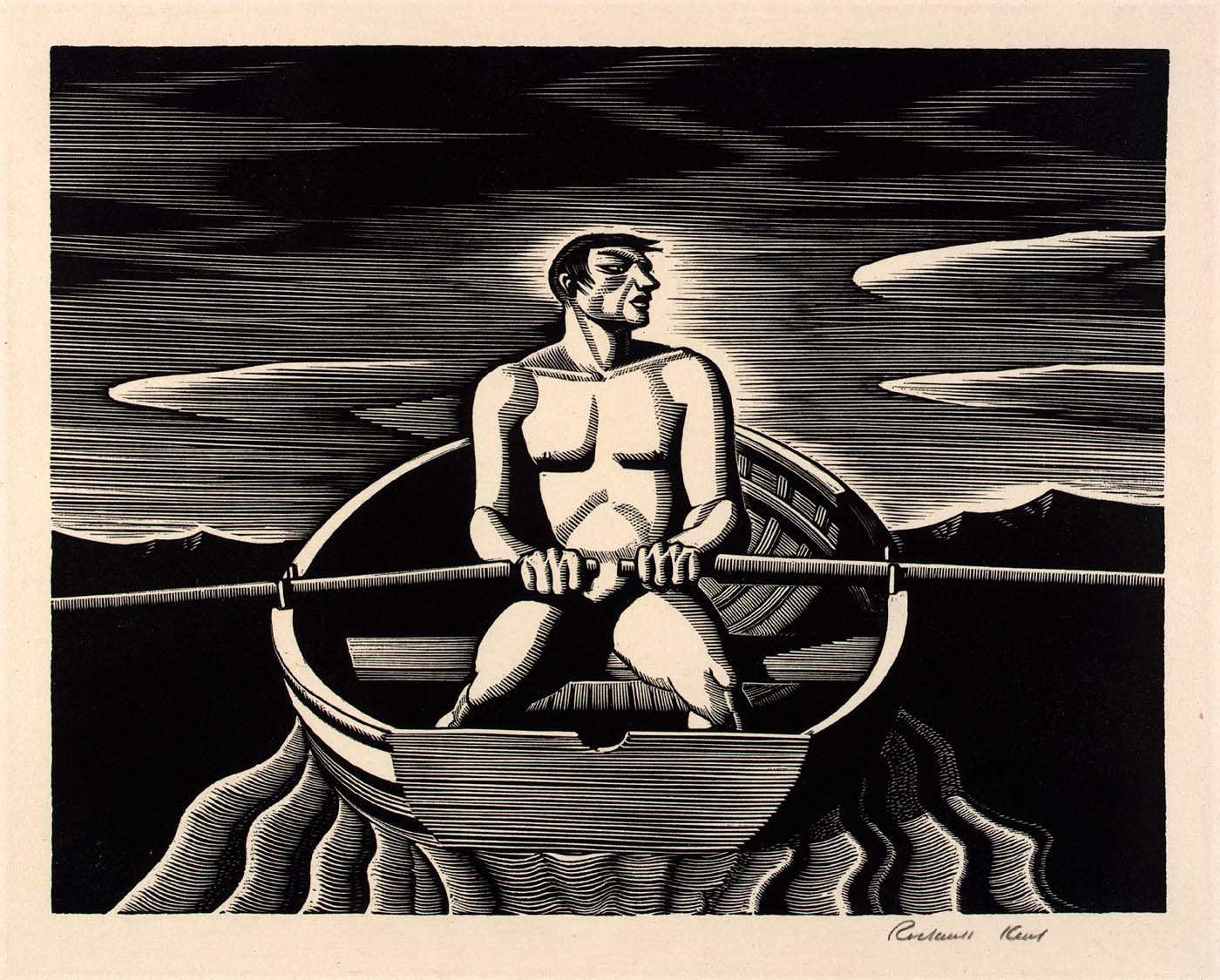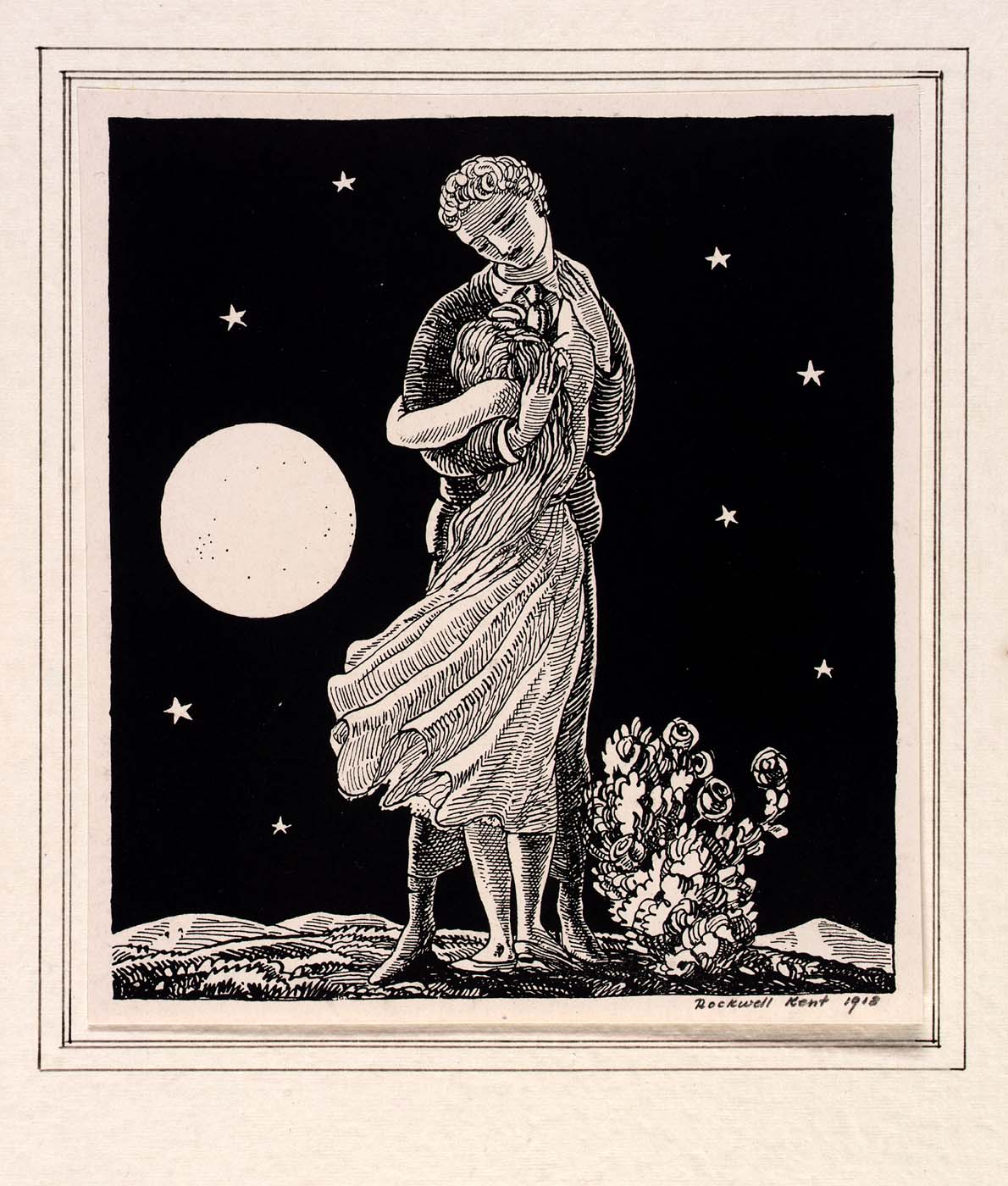Rockwell Kent
Painter, author, navigator, and aggressive social reformer, Kent was born in Tarrytown, New York, into an upper-middle-class family whose values he soon found stifling. He studied architecture at Columbia University but abandoned that career after a summer working with William Merritt Chase, who encouraged him to apply for a scholarship to the New York School of Art. Kent's teachers included Robert Henri, Kenneth Hayes Miller, and Abbott Handerson Thayer. Through Henri, Kent saw the grittiness of urban life, causing him to reevaluate the genteel circumstances in which he had been raised.
It was Thayer who introduced Kent to Monhegan Island off the coast of Maine, where he was to live from 1905 to 1910. Captivated by its scenery, he worked there as a carpenter and lobsterman to earn enough to allow him time to paint, living the life of his subjects, the "toilers of the sea." Kent admired the values of those who lived in the wilder parts of New England, believing their way of life exemplified his ideas of Christian socialism in which poverty and hard work were high goals. He found even New Hampshire too bucolic, compared to life on Monhegan. He moved on to ever wilder surroundings—Greenland, Newfoundland, and Alaska—searching, he said, not for "picturesque material," but for "happiness and peace of mind." He found both, for a time, in northern New England.
William H. Truettner and Roger B. Stein, editors, with contributions by Dona Brown, Thomas Andrew Denenberg, Judith K. Maxwell, Stephen Nissenbaum, Bruce Robertson, Roger B. Stein, and William H. Truettner Picturing Old New England: Image and Memory (Washington, D.C.; New Haven, Conn; and London: National Museum of American Art with Yale University Press, 1999)
Objects at Crystal Bridges Museum of American Art (2)
Objects at National Museum of Wildlife Art (2)
Objects at National Portrait Gallery (4)
Objects at Princeton University Art Museum (9)
Objects at The Amon Carter (17)
Objects at Indianapolis Museum of Art at Newfields (22)
Objects at Smithsonian American Art Museum (24)
Objects at Archives of American Art (24)






